














e arly summer at Nols is alWays aN excitiNg time With the arriVal of students, courses departing for the mountains and personal staff trips into the wilderness. Wyoming has had a beautiful spring with low snow levels in the mountains and beautiful Rocky Mountain blue skies. While the boreal summer is the busiest time of year at NOLS, it is nonetheless met with great enthusiasm and energy by all of our staff.
We received news this spring from the NonProfit Times that NOLS was selected as one of the best nonprofits to work for in the country, specifically number 11 on the list. We are thrilled, honored, and humbled by the recognition. This is the third unique recognition we have received in the past year as a best employer in the country.
While our primary focus is always on providing a quality and impactful education for our students, we know that if our staff community and quality is strong, our student experience is also going to be strong. I believe a key component in the strength and happiness of our staff is our commitment to ongoing learning and training. For our faculty, this starts with our Instructor Courses for both our Wilderness Medicine Institute and expedition course faculty. We do not hire our faculty from resume, rather only after we have had first-hand experience for over a month with these candidates. It demands a major commitment from potential staff, and it leads to a quality, committed, and well-trained team. Of course, this is only the first step on a NOLS career path. Our junior staff are then mentored, often for a number of years, by our more senior faculty, receiving further wisdom, knowledge, and leadership training. These on-the-job learning opportunities are supplemented by extensive staff seminar offerings. These programs provide opportunities to hone current skills and expand into new skill areas.
We recently held our annual faculty summit outside of Lander, Wyo. This gathering of nearly 200 staff provides a great opportunity for our staff to learn and share knowledge, discuss ideas for teaching and leading courses, and question and improve curriculum and technical skills. While our staff development efforts are focused on education, they also carry the added benefit of building community, expanding friendships, and fun. Our staff thrive not only on teaching, but also learning. We are a learning community, a learning organization. Our staff demand constant learning and improvement of themselves and also for the organization. I believe this ethic is at the core of why we are recognized as one of the best places to work in the country.
June at NOLS is also when we hold the summer meeting of our Board of Trustees. As with other nonprofits, our board members serve as volunteers to provide overall governance and guidance for the school’s directions. They contribute a lot of time, work, ideas, and generous philanthropic support. Nearly all are NOLS graduates, many are NOLS parents, and a number of them are former NOLS staff. This year we have five trustees coming to the end of their terms of service, including our current chair. I want to thank these individuals for all of their great work over the past half a dozen years. A big “thank you” to Doug Dalquist, Jane Fried, AJ Grant, Kei Yamamoto, and our chair Tori Murden McClure.
Have a great summer and I hope you all find an adventure in the wilderness!
john Gans, NOLS Executive Director
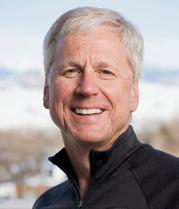
casey dean
Editor
allison jackson
Designer
sam Baker
Designer
avi Kommel
Design Intern
rich Brame
Alumni Relations Director
john Gans
NOLS Executive Director
july 2012 • volume 27 • no. 3 Published three times a year in March, July, and November.
Postmaster: Send address changes to National Outdoor Leadership School 284 Lincoln St. Lander, WY 82520
The Leader is a magazine for alumni of the National Outdoor Leadership School (NOLS), a nonprofit school focusing on wilderness skills, leadership, and environmental ethics. It is mailed to approximately 60,000 NOLS alumni and an additional 10,000 prospective students. NOLS graduates living in the U.S. receive a free subscription to The Leader for life.
The Leader accepts paid advertising and welcomes article submissions and comments. Please address all correspondence to theleader@nols.edu or call (307) 332-8800. Alumni can direct address changes to alumni@nols.edu or (800) 332-4280. For the most up-to-date information on NOLS, visit nols.edu or e-mail admissions@nols.edu.
The Leader is printed with soy-based inks in Portland, Ore., on paper using 30 percent post-consumer-recycled content. A paperless version of The Leader is available online at nols.edu/alumni/leader.

that can be read by
Search “QR code” to find a free app for your phone, then use it to read images of the QR codes in The Leader. Scan the code above to see the latest episode of The NOLS Cooking Show
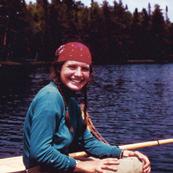
Recognize this person? The first 10 people to contact us with the correct answer will receive a free NOLS Leadership Week t-shirt. Call NOLS Alumni at (800) 332-4280 or email alumni@nols.edu.
The answer to last issue’s “Who is This” is former NOLS instructor George Hunker.
5 Field note S: Running on the knowledge that he can
6 iSS ue room: Act quickly to get your two cents in
7 Wild Side oF mediCine: Instructors set an example
8 a lumni ProFile: Tate Higgins finds inspiration in adventure
9 a lumni ProFile: NOLS changed the course of his life
20 a lumni t riPS: Return to the backcountry. Bring a friend.
21 r evie WS: Where to go, what to see, and why to take the kids
22 gear room: Underneath it all…
24 r eCiPe Box: Give me a cake, give me a “brake!”
25 Ja BBerWoCky: Catch up on your coursemates’ lives
25 giving: New developments in Development
26 Su S taina Bility: NOLS went big for Earth Day
27 BranCh note S: By the numbers
29 Belay oFF: A study of solitude
32 t raver Se S: Backcountry beauty brought out with brushes
10 l eader S hiP at nol S NOLS’ foundation lies in leadership. Read this examination of how it developed and what it means to us and our students today.
12 World t riathlon a dventure, Part iii
Charlie Wittmack, the man who designed and completed the World Triathlon, reflects on a moment in his life that influenced the whole grand endeavor.
14 PhySiCal health: a Foundation F or a liFe S tyle
Just a block down the street from NOLS Headquarters in Lander, Wyo. sits a small, yet all-encompassing gym. We talked with the owner about fitness and health for a lifetime of adventures.
16 Cover: v eteran S ‘Come home’ to Wilderne SS
NOLS believes deeply in the power of positive, ethical leaders and is pleased and honored to be collaborating with the Sierra Club on the Military Families Outdoor Program. One of the individuals on the first course of the program shares his insights.
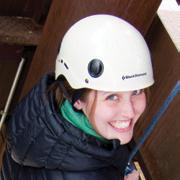
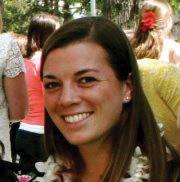

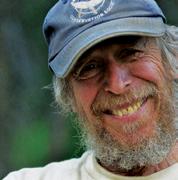

Baker lives in Lander, Wyo. with her fiancé and works as a graphic designer at NOLS. She spends her free time playing outside, cycling, working on art projects, and baking. She won the Valentine’s Affair Chocolate Contest this past February with her recipe for cheesecakestuffed strawberries. She completed a NOLS Baja Sea Kayaking course in March and brought her talent for baking into the backcountry.
Evans is a NOLS New Zealand graduate, a Wilderness First Responder, and a Colorado College alumna. She has been a part of the NOLS Headquarters team all spring as the alumni intern and just moved to NOLS Rocky Mountain down the street for a summer position. She can often be spotted around Lander running with her beautiful German shorthaired pointer running partner.
Wittmack is an attorney and adventurer who lives in Charlotte, N.C. The 1995 graduate of the NOLS Semester in East Africa leverages his expeditions to complete a variety of humanitarian projects. He is an ambassador for Save The Children and operates maternal health programs in Nepal. He is also an advocate for cancer survivors and leads adventurebased survivorship programs on five continents.
Zimmerman is a forensic psychologist in practice in Portland, Maine. He is also a Registered Maine Guide and a member of the Professional Ski Instructors of America. He guides in both Maine and Montana and has led backcountry ski trips to Yellowstone National Park for the past 27 years.
Since retiring five years ago, Hoener’s journey has included more than a year of graduate level studies in natural history and place-based education with related fieldwork at the Teton Science School and several wilderness therapy programs. His goal is to have fun outdoors while giving back. Hoener’s three NOLS courses allow him to feel comfortable in strange places that quickly become wonderful new worlds.



great job!
What do you think? Join the conversation.
Join the conversation. Send your feedback or conversation starters to theleader@nols.edu, post it to Facebook, tweet it (@NOLSedu), or give us at call at 800-710-6657 ext 2254.
I think it’s fantastic. Nice use of white space and photographs. Clean layout. I like the new size. It’s inviting … great job!
jodi Genest, in response to a question on LinkedIn about the new Leader format.
Thanks, Jodi!
Soy ink?
I really like the new format of the Leader, and how open to feedback you were after the first issue (I have old eyes too!). I also like that you are focusing on non-printed formats. While in print, I assume it is printed with soy ink on recycled paper, but if so, I didn’t see that referenced anywhere and would encourage you sharing that info. jay satz, via email
The Leader is printed on Forest Stewardship Council (FSC) certified paper made from 30 percent post-consumer-recycled fiber. NOLS always tries to use paper from responsibly-managed forests, and we even track school-wide paper use on outsourced print projects. We’re psyched to share that we’ve increased our use of FSC-certified paper from 72 percent of all projects in 2009 to over 96 percent in 2011! And yes, the inks used in publications like The Leader are soy-based.
daniel asked nolS alumni what they think is the best way to list nolS experience in a linkedin profile. The answers can also apply to resumes for impressing your next boss:
alliSon I list my NOLS course under the education section, and since I also work in town for NOLS, I describe that as work experience.
JenniFer I listed it under Education and don’t work for NOLS. Seems to have worked fine, and that’s for about a year now.
This was my favorite talk from the summit this year. In the frontcountry the iPhone is my watch, my camera, my GPS, my reference guide. With advancements in battery life and connectivity these multi-use devices will find themselves deep in the backcountry. How we choose to deal with that fact will be interesting to see. William roth on the NOLS.TV video of the Faculty Summit forum about technology in the field.
Thanks, William (one of our own here at NOLS Creative) for helping make these videos available to anyone interested and for being part of the conversation!

By the numbers
Facebook Likes: 27,041
Twitter followers: 5,166
LinkedIn NOLS Alumni members: 1,720
Facebook Feed
We asked, “how are you involved in getting people outdoors?”
ryan SParkS GOT ALL MY ROOMMATES AND A FEW FRIENDS Incredibly Psyched about an App Trail trip in a few weeks. unfortunately i can’t make it with, but they’ve been avid about putting it all together! and its awesome to watch!
Brian drourr I work part time as a bouncer at a bar hear in Burlington VT. every time I catch an under age student drinking, I personally see to it that they wind up outside!!
JenniFer hurth Helping promote and put on a backcountry clinic, yoga, and music festival in the sierras! www.freerideflowfest.com
We asked, “are you a Wilderness First responder?”
Will Friday Since 1987 (early Wild EMT, then WFR ever since). I’m one of the curmudgeons in the re-cert class who comes in to the re-cert grumbling and walks away having learned more than one new thing, again.
tim lanSing Wilderness EMT currently working..with servers and routers. i feel wasted.
John CrouSe vii Thankfully.
Ben Fox Yep, and hopefully a WEMT before the end of the year!
BY ROGER ZIMMERMAN, MOUNTAINEERING ExPEDITION ‘75
“...I’m
on the road again, just can’t wait to get on that road again...”
–Willy NelsoN
i N october 2011, i ra N to VermoN t From Maine. It’s about 166 miles from where I live in Bethel to Burlington, Va., home of the University of Vermont (UVM). I had graduated from UVM five decades earlier and was planning on attending the 50th reunion of the class of ‘61. So, why run?
1957. No cell phone, no laptops. I was totally unprepared for college and barely survived my freshman year. I had had some, shall I say, difficulties in high school. I had read little, understood less, and hung out in a place called Punk’s Corner. On track to bumhood. There are some who experience something like a metamorphosis at college. That was me. So several months before the reunion, I hatched a plan. I owed my alma mater a great deal. I could raise some scholarship money and help a kid go to my school. I’d do it by running and getting pledges. I’m pretty active. Why not put my constant exercise to work?
I contacted the UVM Alumni Office. Frankly, I figured they’d think I was one alum with a loose screw. “You’re going to run from where? You graduated when?” Wrong. They were interested. Before long, publicity started rolling forward.
I planned to stay in fire stations, church basements, and in the homes of people willing to take me in. I’d run with a pack for those nights I had no place to stay except the woods.
In 1975, I took a NOLS mountaineering course. Another transformative experience. Years later, founder Paul Petzoldt moved to Maine and I re-established contact with him. Between Paul and NOLS, the inner voice had grown louder: “I can do this.” Did I have any doubts? Sure. Yet one of the things that can come out of exposure to NOLS is a measurable increase in confidence and a measurable decrease in self-doubt. Don’t misunder-
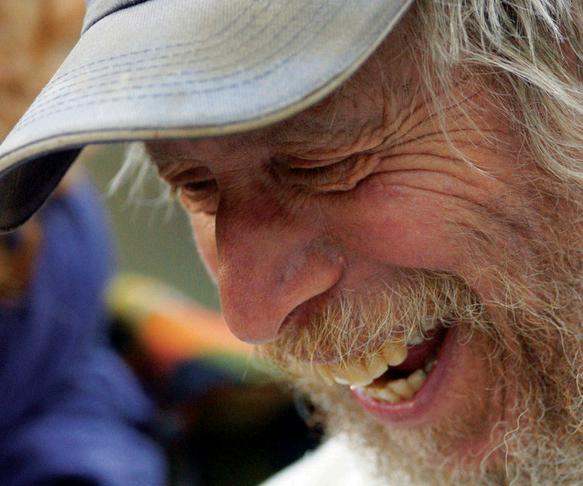
stand. One’s capacity for internalized jiggling doesn’t get erased. Far from it. But the experience helps students put things in perspective and develop a sense of resolve. Students go from “a could” to “a would.” My NOLS background has helped me become better at charting a course between taking on a challenge and recognizing my limits.
Running is the fine art of putting one foot in front of the other. Quickly. And in this case, for many miles.
But I’d be running with a pack, so my gait would be a bit different. I would have to pay attention, not zone. Logging trucks don’t always see little humans. Further, northern New England in autumn isn’t pretty; it’s jaw-dropping gorgeous. Explosive splotches of reds and oranges and yellows color the landscape. That’s the upside. Downside? Leaf peepers looking at trees ignoring the goober running on the side of the road.
I splashed through constant rain the first week. Forget bumhood; it was duckhood that penetrated my consciousness. I came up with a new definition for “wet brain.”
Halfway through Vermont, I spotted

some troll-like signs by the road. A couple of my closest friends had been at work. “Onward” a sign said. ”Zimo—you’re awesome” read another. I doubled over with laughter. Many a mile was soothed with the bliss that comes from the love of those closest to me.
The second week was drier but chilly at times. It was October, and it was northern New England; snow wasn’t out of the question. Thankfully, there was none.
But there were hills. It’s good I like running hills, because this is hill country. It was hard, but I had made an agreement with myself: It’s a run, not a walk. Hence, no walking. No car rides.
I honored that agreement and arrived in Burlington right on schedule. Applause, 15 minutes of fame. More significantly, I had succeeded in raising a fair amount of money for the scholarship fund. Along the way, angels housed and fed me. I calculated what I had saved by not staying in motels and sent a check to UVM to help heep high the coffers.
It was a run for the ages. Yes, I’m still running, but mostly around the neighborhood.
But who knows what a 75th reunion might bring.
BY AMY RATHKE, NOLS ENVIRONMENTAL STEWARDSHIP COORDINATOR
surrou Ndi Ng tucsoN, a riz to the north, east, and south, a series of mountain ranges juts up from the desert floor. Ranging from 3,000 feet to over 10,000 feet in elevation, the mountainous desert landscape that makes up the Coronado National Forest is called the “Sky Islands” for its basin and range topography.
A backcountry classroom for NOLS since the late 1980s, the Coronado is currently undergoing a Forest Plan revision. Forest staff are evaluating and creating management strategies for the years to come.
They face a series of challenges. Balancing access for recreation with preservation of pristine environments will continue to be a point of contention. Input on how the Forest should be managed from those with personal connections to the place and those with operating interests is critical in developing a thoughtful and functional plan. For example, an early draft included group size limitations that would have prevented traditional NOLS courses from being run in Wilderness areas.
The wilderness classrooms on the Coronado National Forest make up the backbone of NOLS’ Southwest Semester. The backpacking and climbing options found in the Galiuro Wilderness, the Santa Teresa Mountains, and the Dragoon Mountains—and their proximity to Tucson—help make the city an ideal launching point for NOLS expeditions.
“The Coronado is just a great classroom for us all around,” said NOLS Southwest Director Lindsay Nohl. “The access points are all fairly close to the branch, and the remote wilderness feel of the Coronado is a huge asset to our courses.”
Some students may come to the Southwest expecting a mellow experience, informed by the region’s laidback lifestyle. Days are hot, nights are cold, plant life is
sharp, and insects and reptiles are poisonous—mellow it is not. However, within the stark realities of the desert environment, there is beauty to be found. The stacking of ecological zones is apparent as students enter the Galiuros, hiking from the sparsely vegetated lower elevations into higher washes full of flora.
Some courses are able to traverse the entire Galiuro range, finishing a short drive from the Santa Teresa Mountains. Though only separated by 20 miles, the two ranges feel dramatically different. Travel in the Galiuros is largely on trail.
In the Santa Teresas, one can expect offtrail travel through a landscape forested with acacia and manzanita, punctuated with granite intrusions. Though the range is smaller, it provides an excellent proving ground for students who are ready to test their navigational mettle.
South and east of Tucson, miles of grasslands abut the granite domes that form Cochise Stronghold in the Dragoon Mountains. The Dragoons are the
third area of the Coronado National Forest NOLS visits on Southwest Semesters, Instructor Courses, and instructor training seminars. Students spend their days climbing the granite slabs, learning how to use the rock’s many formations for protection and as hand- and footholds. Camping at Cochise Stronghold is developed in some areas and dispersed in others.
With such a diversity of ecosystems and activities on the same forest, the Forest Service will have its hands full in coming up with a satisfactory plan. NOLS is tracking the planning process and providing input, but federal agencies always appreciate first-hand accounts from visitors.
If you have visited the Galiuro, Santa Teresa, or Dragoon Mountains and would like to advocate for these wilderness classrooms, please email stewardship@nols. edu for more resources. Your testimony about the value of these backcountry areas matters a great deal from the perspective of land managers.
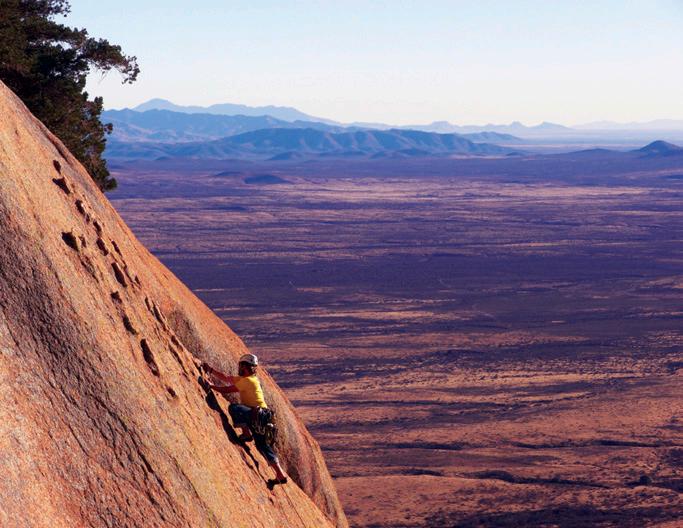
BY DAVE YACUBIAN, WMI INSTRUCTOR
thea, felloW Wilder N ess m edici N e i Nstitute instructor, and I were organizing our Wilderness First Responder (WFR) course at a San Francisco climbing store and gym for a scenario when one of the students spoke up.
“Someone is yelling that there is an unresponsive woman on the floor in the gym,” the student said.
We walked into the adjacent gym and saw a man performing chest compressions on a young woman. Kneeling at her side, I learned that the woman was unresponsive and did not have a pulse. Someone had called 9-1-1, and someone else was retreiving the gym’s automated external defibrillator (AED).
I confirmed the absence of a carotid pulse and observed ineffective breathing attempts by the patient. The man continued his chest compressions. I began rescue breathing.
Very quickly, within two to three sets of compressions, the AED arrived. Thea applied the pads. The AED analyzed the young woman’s heart rhythm, and then stated, “Shock advised—charging,” followed by “Stay clear of patient, push Shock button.” Thea delivered a shock.
We had just resuscitated a young Woman While our Whole class, along With staff and other bystanders in the gym, stood and Watched.
We immediately resumed compressions and respirations.
Two to three cycles later, the patient took a breath. Her pulse had returned, and we stopped compressions. I asked her to squeeze my hand, and she gave me a gentle squeeze. I asked her name, and she quietly stated it. I told her that she was at the climbing gym and had become unresponsive.
At this point, less than six minutes into this event, the paramedics arrived and took over the scene. As she was wheeled
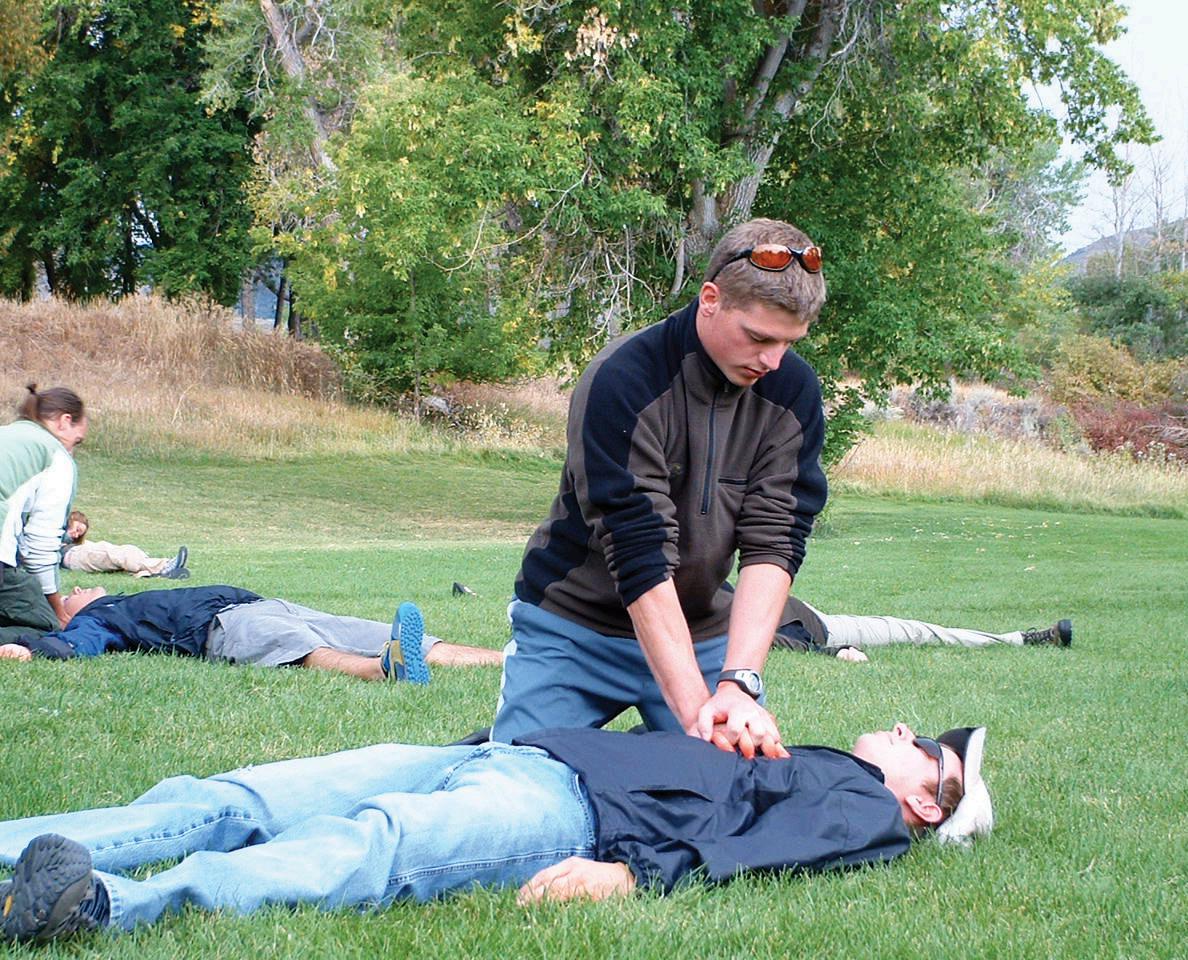
out of the building, I tried to take in what had just happened. We had just resuscitated a young woman while our whole class, along with staff and other bystanders in the gym, stood and watched. What we experienced was exactly what we teach: early recognition, early CPR, early AED, and early advanced cardiac life support (ACLS). It was incredible to see it all work, to see this young woman resuscitated.
This event had a profound effect on the students. They left more confident and with a greater sense of purpose as care providers. One of them noted that not only did they witness a positive end to a potential tragedy, they also saw their instructors practice their values, skills, and knowledge as they had taught them.
“Thea and Dave, individually and as a team, brought a most important leader-
ship quality—authenticity—to the classroom and to a survival situation,” one student wrote on a course evaluation.
The young woman, who is doing well after surgery to implant a permanent pacemaker in her heart, benefitted from Dave and Thea’s repeated practice. Idle skills are quickly lost, be it chest compression or map reading. When was the last time you practiced CPR? Or how to use an AED? When was the last time you thought to look for an AED in a building?
Lifesaving skills include habits like identifying where the nearest AED is located in any building. Like fire extinguishers, these can be so common we fail to notice where they are located, which can cost precious minutes in an emergency.
BY J ORDAN E VANS, NOLS A LUMNI I NTERN
Whether it ’ s schemi Ng up mass casualty scenarios for Wilderness EMT classes or inventing characters for his next work of fiction, NOLS Wilderness Medicine Institute (WMI) instructor Tate Higgins puts his creativity to the test in endeavors around the globe.
Higgins lives life to the fullest as an outdoor guide, outfitter, WMI instructor, and, as of this spring, published author. His short story “Souvenirs” was published in the Spring 2012 issue of American Short Fiction and is a testament to his artistic talents.
The South Carolina native first became involved with NOLS on a 2007 WEMT course. Tate then volunteered on the Fort Collins ambulance service while finishing his master’s of fine arts in creative writing at Colorado State University and teaching college English courses.
“I continued to think back on my WMI course really fondly. I thought someday I’d love to work for WMI,” said Higgins. “That month-long course bumped my life path pretty significantly from where I thought it was headed—in a really good way.”
Higgins reconnected with WMI in 2009 and has since mixed instructing with his other adventures. In 2011, he
“being a teacher is such a great Way to interact With other humans... i think that influences my Writing, just that environment and being around other instructors that have these great stories.”
taught for WMI in Texas, California, and India; led Kilimanjaro and safari trips in Tanzania; and guided six-day river trips on the Middle Fork of the Salmon River in Idaho.
“I lived out of a suitcase, and for work I got to see some parts of the world I might not have ever gotten to. It opened a lot of doors and perspective,” he said.
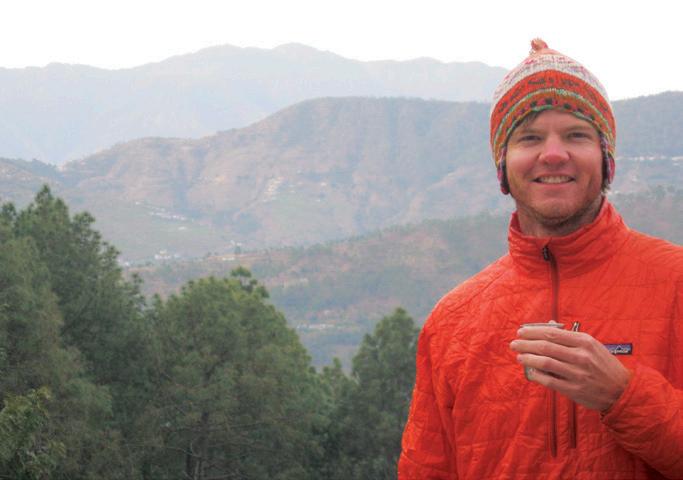
And he wrote. Through his escapades around the globe, Higgins continually finds inspiration for his writing, a passion he pursues no matter where he is or what adventure he’s on. Higgins is strongly influenced by the people he encounters in his travels.
“I’m most interested in how people interact—hurt, lie, take care of each other—how characters do that. My stories tend to revolve around relationships and interactions,” he said.
“Souvenirs” is replete with interesting character interactions, augmented by the presence of alligators. In this short story, a routine day at the alligator park takes a turn for the peculiar when a mysterious, one-handed woman catches the park attendant’s attention by shoplifting from the gift shop.
“There’s a lot of suspense in alligators—they’re all smooth and calm until they’re not. These characters are having their human issues, and then one step away there’s these alligators hanging out. In my head it’s this cool place to explore,” said Higgins.
He has the opportunity to examine
interesting environments and human behaviors such as this thanks to his background in EMS, guiding, and teaching in “the coolest classroom.”
“Being a teacher is such a great way to interact with other humans and to see students progress and see students struggle. I think that influences my writing, just that environment and being around other instructors that have these great stories,” Higgins reflected.
The connection between his WMI career and writing career may be further explored, Higgins hinted, in future works that expand on “Souvenirs.” Future stories’ plots may thicken with a “crazy” alligator attack.
“Teaching wilderness medicine, I’ve seen pictures or descriptions of every injury imaginable. It’s hard for that not to come in there somewhere,” Higgins said before shifting from hints to predictions.
“Somebody is going to get attacked by an alligator.”
Check out the Three Penny Review later this year to find Tate’s second publication and what scenario he comes up with next.
BY C ASEY D EAN , NOLS PR S PECIALIST & WRITER
rya N thompsoN Was oN the mecha N ical engineering track at North Carolina State University. He thought he wanted to be a mechanical engineer.
Then he was bit by the NOLS bug.
“We were walking through tall grass, and I was bit or stung by an unknown Alaskan monster,” Thompson recalls. “Thirty minutes later, it started itching. I thought it was just the result of 30 days in the bush, you know?”
Turns out he was highly allergic to whatever the monster was. He had to trust in his group as they assessed him and tracked down Benadryl to treat him. To this day, he carries the NOLS value of tolerance for adversity.
Of course, that lesson wasn’t the only thing he took away from his Alaska Backpacking course in 2004.
“My NOLS course, it changed my life,” he will tell anyone who asks.
Surrounded by the breathtaking landscape of the Wrangell St. Elias National Park and Preserve, Thompson’s priorities began to shift.
“NOLS was the factor that made me want to work in the outdoor industry and to support adventurers, but more so, it made working for a company that protected those areas absolutely imperative,” he said.
Thompson’s interest turned to developing materials and equipment for outdoor pursuits, and he changed his major to textile engineering. After attending a lecture about environmental responsibility by Jill Dumain, Thompson set his sights on Patagonia. Upon graduating from NC State, he immediately started applying for “any and all positions” at Patagonia.
It took a year, but the perfect job finally came up, and Thompson found himself moving to Ventura, Calif. He spent four years as a raw material quality analyst before advancing, last year, to his current position of material developer. Creating the very materials he previously inspected, Thompson focuses on
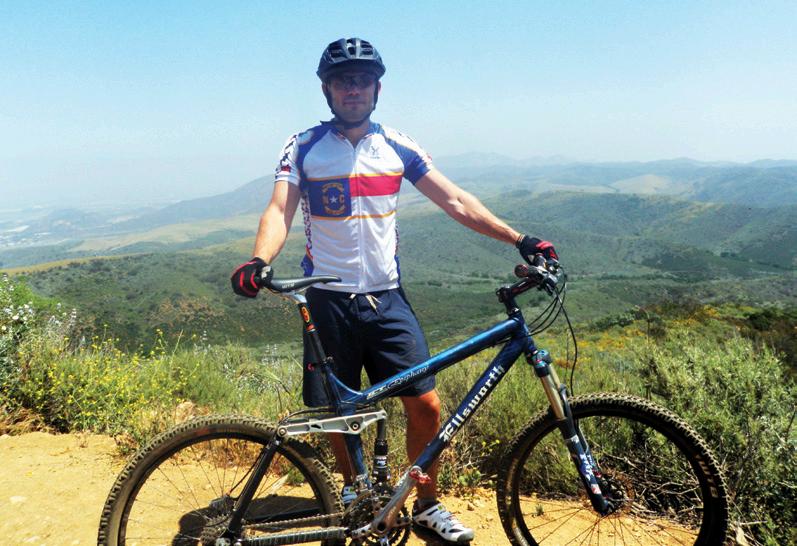
technical knit, in particular. His role is to collaborate with designers to find and create the fabrics that will make their designs possible, for example, Capeline base layers with maximum output moisture management.
“I wish I could go back and redo my NOLS course and equip everybody,”
Thomas said, particularly with antimicrobial clothing. “The smell was atrocious by the end of the course,” he laughed.
His interest in next-to-skin materials, in particular, stems from both the technical aspects of the work and his own outdoor interests as a mountain biker, runner, and hiker.
“I love what I do, so I owe a lot to NOLS for inspiring me to go in that direction,” he said.
And the environmental sustainability inspiration he found in Wrangell Park still burns. As a member of the Patagonia team, Thompson is proud to be part
of a company that is on the forefront of recycled polyester, organic cotton, and more environmentally friendly fibers. Furthermore, Thompson has dedicated himself to a number of environmental initiatives such as the Patagonia Green Team, the Biking to Work Week Committee, and representing Patagonia on the executive board of Textile Exchange, an international nonprofit committed to textile sustainability.
Thompson employs the NOLS leadership curriculum as he encourages coworkers and the world beyond to play their role in protecting Mother Nature.
“The best thing I brought out was knowing how to effectively be a follower, be a supporter in group dynamics,” he said.
That, and to always carry Benadryl in the wilds of Alaska.
By John Kanengieter, NOLS Director for Leadership
LEADERSHIP At NOLS wASN’t ALwAyS A cuRRIcuLum Of ItS OwN. In fact, leadership was more of an incidental, something NOLS founder Paul Petzoldt at times equated to technical skills, sound judgment and good expedition behavior. That connection holds true today, though the NOLS perspective on leadership and how we teach it has taken form over the last 46 years.
Certainly, NOLS was created out of a need for leaders. The intended outcome of producing individuals who can hold their own and their group together in any situation endures to this day, though the process has shifted with time. One thing that hasn’t shifted is the belief that leadership is best learned in the wilderness with real and immediate consequences. This philosophy is born of the value NOLS has always put on mastery of technical skills in the backcountry. It is clear that leadership requires competence, judgment, and sound decision-making—skills based in technical familiarity.
But as NOLS honed its role and approach in producing leaders, we had to address the common mistake of conflating outdoor skills and leadership skills. The attention given to defining leadership and becoming the best in leadership education yielded the now familiar terminology within the NOLS community and far beyond.
At the core of NOLS’ leadership philosophy are the seven distinct skills that go beyond competence and judgment to encompass communication, expedition behavior, tolerance for adversity and uncertainty, self-awareness, and vision and action, as well. NOLS operates on the belief that leadership requires putting these skills to use and taking responsibility for one’s role in a leadership dynamic. At any time, team members may take the role(s) of designated leadership, which entails being responsible for the group and reaching its goals, or active followers—supporting and following the designated leader while being involved in decisions. They may be expected to execute peer
At NOLS, we believe that leadership can be learned. The people we instruct, from teenage students to business executives and everything in between, believe the same. Marc Randolph, among numerous other renowned members of the world of business, was quoted saying so in the April issue of the Harvard Business Review :
“Marc Randolph, a cofounder of Netflix and a NOLS graduate, strongly believes in stepping up to leadership this way. ‘On a hike, it’s a constant process of not being sure, taking a shot, and finding out one, 10, or 100 minutes later whether your decision was a good or bad one,’ he says. ‘That’s what you face in the business world, especially as an entrepreneur.’”
To read more about how NOLS’ curriculum applies to the business world in the article written by our own Diversity and Inclusion Manager Aparna Rajagopal-Durbin and Director for Leadership John Kanengieter, pick up the April issue of the HBR.
leadership, which requires working together as a team to achieve a goal, and self leadership—conducting self care and taking initiative to ensure the ability to take care of the group.
Students hone these seven skills and become familiar with these four roles through a leadership progression, practicing technical skills while in situations that demand such actions as clear communication, sound decision making, and the ability to identify a vision and act as leaders. Life in the backcountry as part of a team fosters expedition behavior, or the willingness to cooperate, motivate others, and lead peers. The challenge of assuming more responsibility while figuring out an unfamiliar environment and new skills boosts students’ tolerance for adversity and uncertainty. They become leaders, each with his or her own unique signature style to employ it in the future.
All this effort in developing the best leadership curriculum in the world is inspired by the knowledge that these leadership lessons are carried beyond a NOLS expedition. We know and believe that solid outdoor and expedition leadership translates into strong leadership at school, with friends, in the boardroom. Being good expedition members translates into effective team-members and citizens in our world today. The leadership lessons learned on NOLS courses from year one have yielded incredible results over the decades. NOLS graduates have explored space and led powerful companies. Our esteemed alumni have founded green and international development organizations the world over and become instructors who perpetuate the lessons of the NOLS leadership model. They summit peaks and surmount challenges beyond what the average soul might believe possible. They change the world.
NOLS OPERAtES ON tHE bELIEf tHAt LEADERSHIP RE qu IRES P utt ING t HESE S k ILLS t O u SE AND tA k ING RESPONSI b ILI ty f OR ONE ’ S ROLE IN A LEADERSHIP D y NA m I c.
In the future, our language about leadership will likely develop further, but there will never be a substitute for the experience that an expedition in the wilderness brings in a person’s leadership development. In the future, as always, we will continue to cultivate great leaders who have technical skills, serve others, and work toward preserving our precious environment.


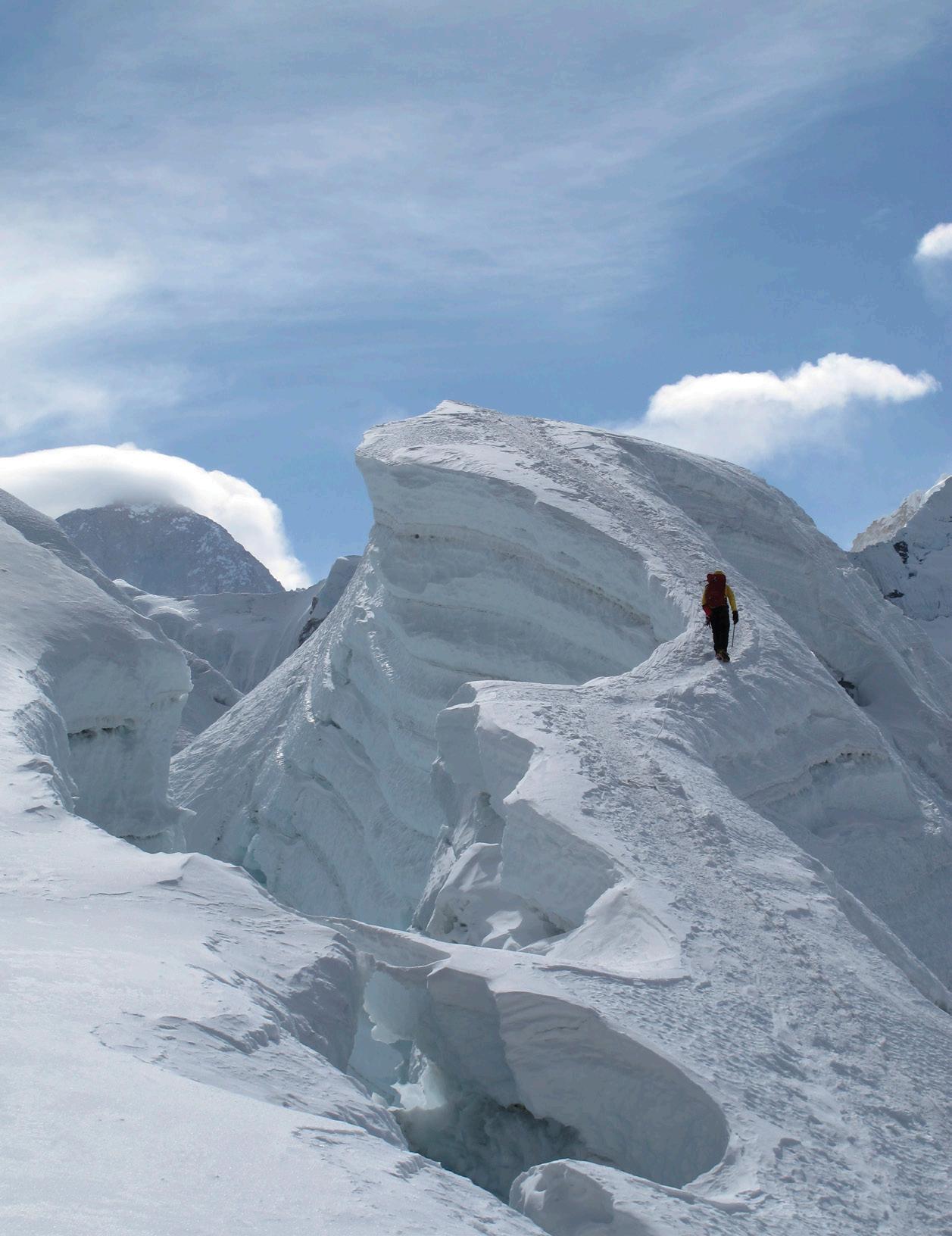
By
“A SEmEStER wItH NOLS wILL cHANGE yOuR LIfE,” our instructor, Suza, told us as our group crowded around a small fire on the second night of our expedition on Mount Kenya. I was 17 at the time and filled with sudden excitement with the realization that next steps into my future were unknown and that my life was about to change. As the idea sunk in, I realized that not only did I want my life to change, but I needed it to change. To find myself in a new community of people that viewed the world as I did and felt that searing tension between frustration and amazement was almost too good to believe.
Fifteen years later, I began to think of that conversation as I stared out the window from my office in the clouds. The sense of belonging and community I had felt on the mountain, and the sense of meaning and purpose that our group had shared, had been unlike anything I had experienced as an adult.
Deep in the filing cabinets behind me was a tattered sheet of paper that I had carried since the summer I graduated from NOLS. On the paper was a quote from Edward Abbey which summarized the twin covenants that I felt were the heart of my experience on Mount Kenya: enjoy the earth, and fight for it and for each other.
In the years immediately following my NOLS course, Abbey’s twin covenants occupied a place of prominence in my life. I carried the sheet in a journal in the lid of my pack, then on the dash of the car in which I lived before finally taping it to the refrigerator in an apartment I rented. As years passed, the sheet of paper began to show its age and it became harder and harder to find. It was eventually put in storage as I finished college, and law school, and moved into my first assignment as a lawyer.
As I stood at the window, I thought back through my experience in Africa. I remembered Abbey’s covenants and took the old paper out of my cabinet and taped it to my office window. As I read the quote again, I realized the reason I didn’t feel meaning and purpose in my life was because there wasn’t meaning and purpose in my life. At some point I had become convinced that the environmental, social, and political challenges that our world was facing were so great that they had become insurmountable. As a result, I had sold out the covenants for an Audi and a house with a swimming pool. Fortunately somewhere inside me was an ember from that African campfire, and as I stared out the window I realized for the first time that I was back at the beginning. I realized that not only did I want my life to change, but I needed it to change. And I was suddenly filled with excitement with the thought that the next steps into my future were unknown.
Three years later I enjoyed a very different view, as I stood alone on the summit of Mount Everest. There was no wind and the temperature was a balmy minus-five. As I looked out I could see the subtle curve of the earth and noticed that the lack of atmosphere caused the sky
to bleed from vanilla to a bottomless shade of navy blue.
The summit represented the finish line of the physical challenge of The World Tri, but I knew that the two humanitarian programs that were a central part of the project were just beginning. Two months earlier, our team had visited a health post in rural Nepal where our first group of health workers had completed a training program as part of our partnership with Save The Children. Two months into this threeyear partnership, we had only trained a handful of what we hoped would be 1,000 health workers and midwives—but we had started.
In addition to providing hope and encouragement to the women and children of Nepal, our team had begun to inspire medical and health communities in America through a partnership with the American Cancer Society. Weeks earlier, we had welcomed a group of 28 cancer survivors and caregivers to Everest Base Camp. Upon completion of the program, this group of cancer advocates would work as citizen-lobbyists, speakers, writers, and fundraisers, with the common goal to reduce the burden of cancer across the globe—another huge challenge, but one which was now underway.
As I sat in the snow taking it all in, I realized that this year, I had come to Everest the long way. It was a journey that began nearly two decades earlier around a campfire in Africa. It was a dream I had pursued through aches and pains and sweat and blood. At times, I failed. But failure created motivation to improve. At times, I succeeded. And success taught me not to be afraid. Struggles gave me strength, and strength allowed me to keep moving forward.
As my scars heal over the years ahead, I’m sure that it will be the memories of the journey that provide my ultimate fulfillment. But on May 6, the finish line was pretty sweet.
This is the final installment of this three-part series, which started in the fall 2011 issue of The Leader




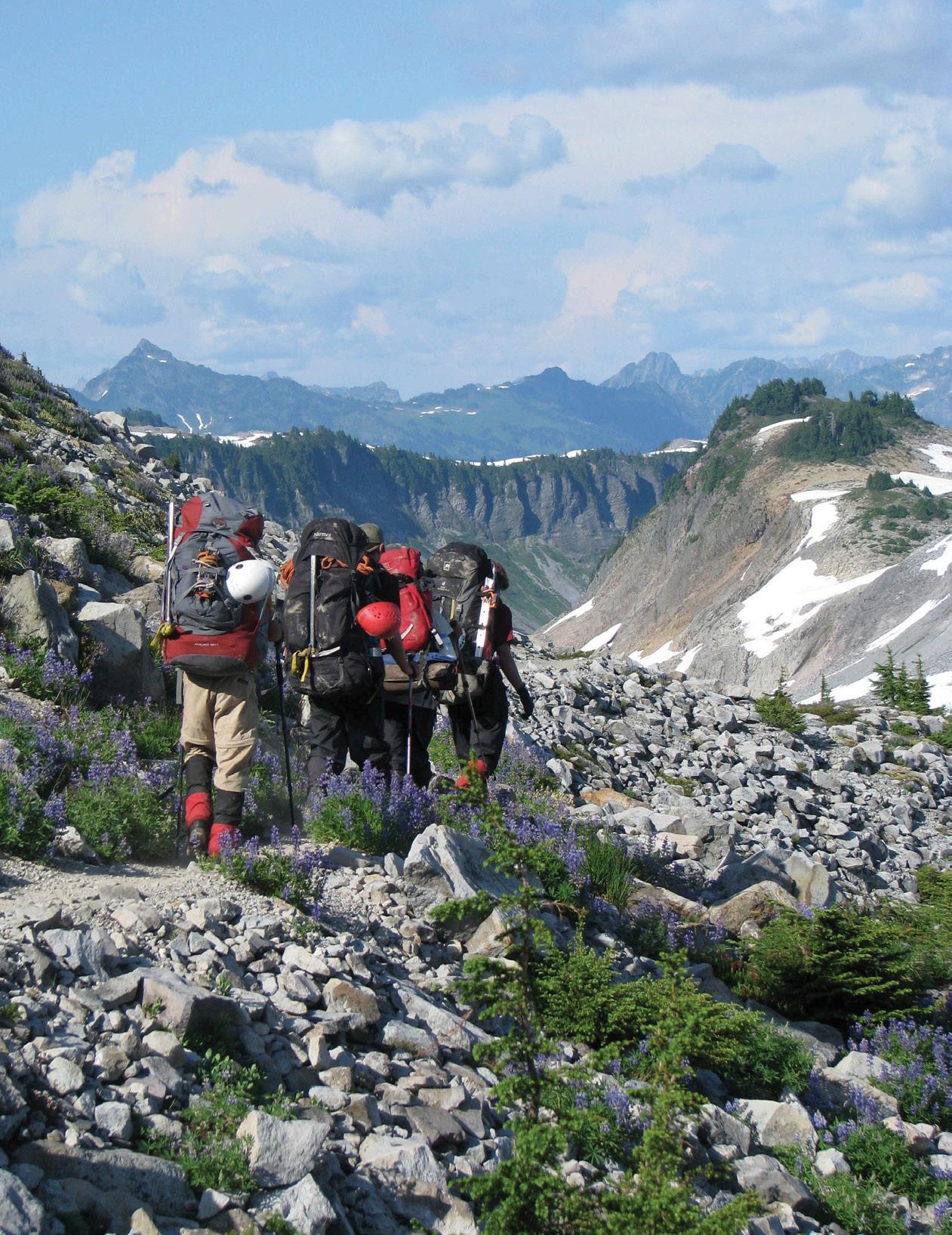






















































GYM OWNER, INTERNATIONAL MOUNTAINEER, AND ROCK climber Steve Bechtel has seen all levels of fitness, workout strategies, and exercise fads over his 15 years in the fitness business. Given his location in Lander, Wyo., he’s also worked with dozens of NOLS student, staff, and instructor athletes.
Though Bechtel has found “NOLS folks” to be generally fitter than the average, he also recognizes that everyone struggles, particularly in the front country.
“Too many of us have Domino’s on speed dial,” he said. “Nationally, people burn 15 fewer calories per day in the last 15 years due to TV remotes and cell phones. A 10-calorie shift is a pound a year—in either direction.”
Consider three types of people: students preparing for their NOLS courses, recent graduates with hard-earned backcountry fitness, and maturing alumni whose fitness may have been derailed by careers or circumstance.
If you see yourself as one of the above groups and you’re seeking to improve your fitness, you’re in luck. Generally, NOLS people share a vision of the outdoors that can be truly motivating—reaching the summit, crossing the high pass with your pack, or just a plain willingness to get up and move—and predisposing toward the dedication required to get and stay healthy.
“Harnessing interest in the outdoors brings tremendous reward if you can get the escape velocity to leave the couch,” Bechtel said. In today’s urban, video-centric society, a tragic majority of people doesn’t have the vision or willpower to sufficiently counterbalance the lure of high-calorie foods.
But your health should be your first priority. Steve recommends members of the NOLS family maintain the healthy and simple standards of life in the backcountry. Boiling down a NOLS expedition into its most basic elements provides a pretty good fitness template:
• Sleep enough.
• Cook your own meals.
• Eat and drink unprocessed items.
• Lift things.
• Walk on uneven terrain.
• Be active: climb, fish, paddle, explore.
“It’s what humans are designed to do.” Steve said. “The problem is not living like a NOLS student in the front country.”
NOLS or any fitness ultimately comes down to one thing: strength.
“Everything in fitness is strength based,” Bechtel said. “Any activity takes strength. Hallways, stairs, or mountains, it’s just a matter of degree.”
A lot of us are more or less fit than we think. Following is a rough fitness test you can try right now (Careful. Do you need a doctor’s permission?) before jumping into a training program or heading off to NOLS.
Start with Bechtel’s push-up/squat challenge. Do a push-up. This means straight arms down to chest touching the floor. If you can’t do one this way, try knee push-ups. Do one rep, then stand up and do a full squat. Then, drop for two push-ups followed by two squats. Continue this pattern, without rest, until you fail to execute a rep or need to take a break. If you can’t make it to five reps, it shows your strength is poor and your anaerobic endurance is low. If you can get past 10, you’re pretty fit.
If you’re amazed by your stellar results, that’s fantastic. If you’re surprised by how hard the challenge is, then take it as a wakeup call. Regardless of how you score, you now have a number to work toward. What kind of aerobic or strength work will it take you to get through one or two more levels of the challenge?
No matter if you’re looking ahead to a NOLS course or back at one, today’s fitness is the result of yesterday’s food and activity choices. Grads, instructors, staff, alumni, and prospective students: Just what are you going to do tomorrow?
If you’ve reached a relatively high level of fitness and you’re looking for a fresh workout to add to the mix, we have just the ticket, and it comes with a little extra inspiration, too!
In June 2013, a NOLS-led African American expedition will climb Denali, North America’s highest peak, to inspire youth—particularly African American youth—to get outside, get active, and become stewards of our wild places. Denali is one of the world’s toughest peaks: the environment is unforgiving and the pack weights high, so fitness is essential. The following challenging workout, designed by Steve Bechtel for the 2013 Denali team, can also be a great session for fit adventurers who want to train alongside this team.
PHASE ONE OF DENALI TRAINING:
30-MINUTE METABOLIC WORKOUT
FIVE SETS, FIVE MINUTES EACH, ONE MINUTE REST BETWEEN SETS:
1 Run in place (one min)
prisoner squats (one min)
off-set push-ups (5/5 for one min)
total body extension (one min)
reverse lunges (one min)
Rest one minute
2 Vertical jumps (one min) push-ups (incline or knee) one min)
prisoner squats (one min)
mountain climber (one min)
prisoner lunge (one min)
Rest one minute
3 Burpees (one min)
prisoner lunges (one min)
side-to-side lunge (one min)
Spiderman climb (one min)
prisoner squat (one min)
Rest one minute
4 Jumping jacks (one min) run in place (one min)
total body extension (one min) close-grip push-ups (one min)
Side-to-side jumps (one min)
Rest one minute
5 Total body extension (one min) push-ups (one min)
prisoner lunges (one min)
mountain climber (one min)
jumping jacks (one min)

WATCH TEAM DENALI TACKLE THIS WORKOUT.
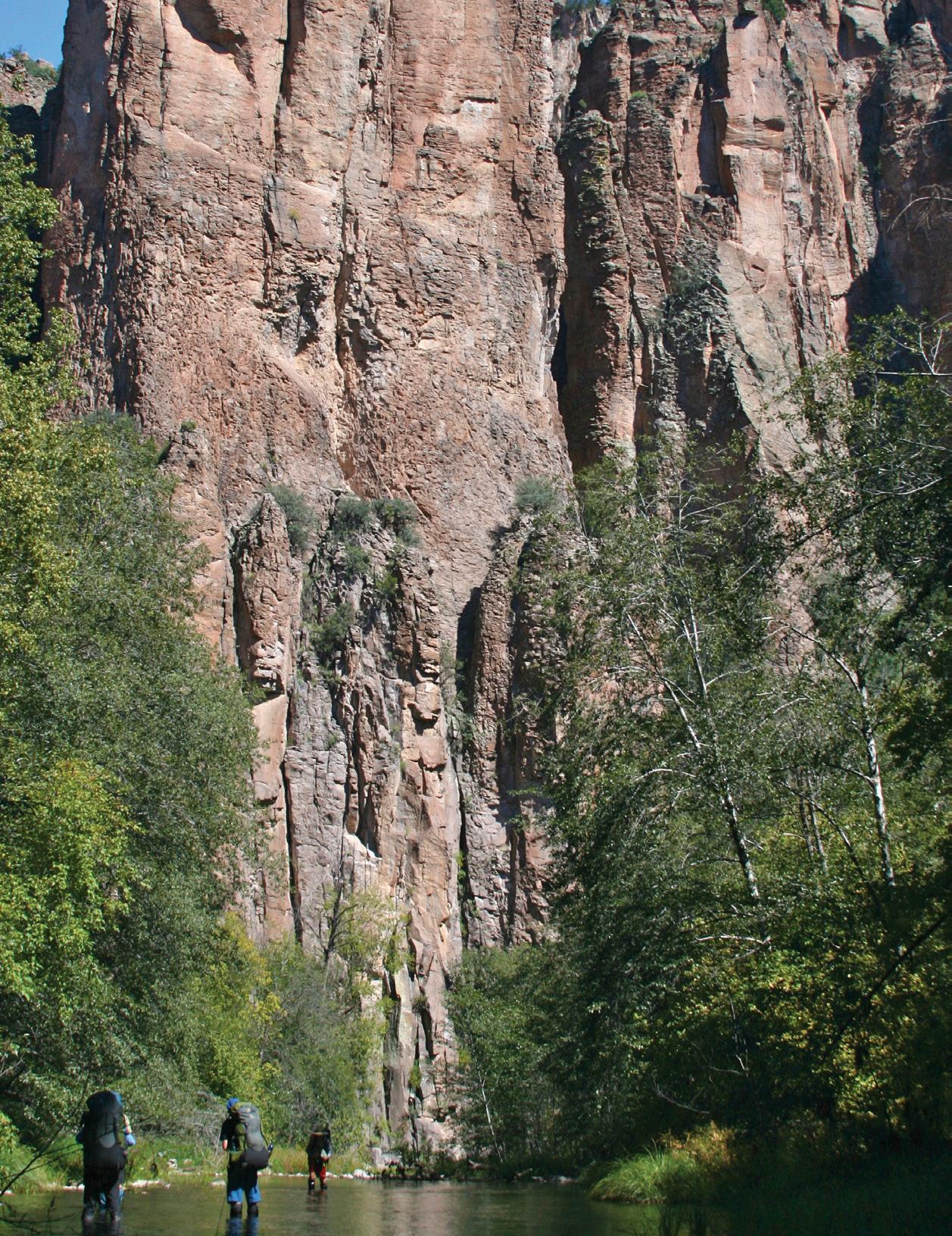



Far from the battlefields of Iraq and Afghanistan in the tranquility of New Mexico’s rugged semi-desert landscape, seven veterans, one military spouse, and two National Outdoor Leadership School (NOLS) instructors embarked on a journey into the world’s first designated wilderness areas in the Gila National Forest (Gila NF).
More than merely a recreational sojourn, the trip offered its participants an once-in-a-lifetime opportunity to experience an unmolested ecosystem devoid of the anthropogenic impacts customary elsewhere in North America.
Aside from the picturesque setting, the students were treated to instruction by two seasoned NOLS instructors during the seven-day backpacking adventure.
The purpose for the trip was to cultivate outdoor leadership in a cohort of veterans as a strategy to connect America’s latest generation of war fighters with the natural surroundings their military service defended. An observer might say the expedition organizers wanted to spark a “green fire” within the veterans for wild critters and wild places.
The 2011 documentary Green Fire chronicles the creation of the world’s first wilderness area, the same Gila Wilderness, designated so June 3, 1924. Since then, Americans have enjoyed its vast expanses by foot and hoof, but never modern technology, e.g., mountain bike, dirt bike, or recreation vehicle. No motors; just living creatures allowed.
Subsequently, the Blue Range Wilderness and Aldo Leopold Wilderness were designated in 1980, respectively. The latter was named in honor of Leopold, the pioneering conservationist, whose passion for the wilderness was the proverbial way of life.
“I am glad I will not be young in a future without wilderness,” he said.
Indeed, the Gila NF, a federally protected landscape, often engenders in recreationists entering its environs a deeper connection to nature in quite possibly its purest form. To experience the Gila is to be bathed in wilderness. Those taking the plunge are expunged of what Richard Louv termed “Nature Deficit Disorder,” or NDD, in the frequently cited Last Child in the Woods
The Gila NF, nature tonic if you will, might be just what the nature doctor ordered for a whole generation of sedentary Americans, the least of whom are veterans. However,
it’s the most recent generation of combat veterans—veterans of more than a decade of overseas war on two fronts—who can help cure a generational case of NDD.
NDD is no secret. Efforts to connect all Americans with the great outdoors are widespread. The Obama Administration’s ongoing America’s Great Outdoors (AGO) initiative is evidence of the federal government’s recognition that not every American is feasting on the bounty of 50 states’ worth of recreation areas and that it would benefit them to do so.
To complement AGO, the Department of the Interior (DOI), offered active-duty military personnel free admission to all federally managed public lands on Armed Forces Day, May 19. Ken Salazar, the secretary of the DOI, said the benefit was earned.
“Our nation owes a debt of gratitude to our servicemen and women who make great sacrifices and put their lives on the line to protect our country and preserve our freedom,” he said. “In recognition of their contributions and service, we are putting out a welcome mat for these brave men and women and their families at America’s most beautiful and storied sites.”
“To experience the Gila is to be bathed in wilderness.”
But how are veterans to transfer the skills of combat to outdoor recreation? How can they be empowered to share those skills with friends, family, and community? The Sierra Club (TSC), Iraq and Afghanistan Association of America, and NOLS joined outdoor forces to start the process of filling the veteran outdoor leadership void.
Seven veterans from the enlisted and commissioned ranks, six of whom were combat tested, from four military branches braved more than three collective time zones to learn backpacking basics and more from two NOLS instructors in the world’s first designated wilderness area. The singular vision for this partnership is to foster outdoor leadership in the veteran community one class at a time. This inaugural year laid the foundation for the Sierra Club Wilderness Expedition (SCWE).
“Our efforts to create a generation of veterans attached to the wild places we Americans are truly blessed to enjoy started with this one special class I was fortunate enough to bear witness to,” said Marcio Paes Barreto, the NOLS program coordinator for the SCWE. “We want to look back at this class as the start of something special to connect our national heroes and heroines with the outdoors their service defends for all Americans.”
Pride in the program is shared by TSC.
“We can all do our part and at The Sierra Club are proud of the work we have done and will continue to do to ensure our military
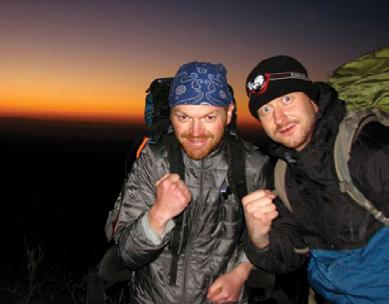

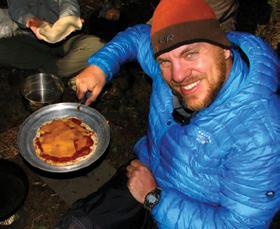
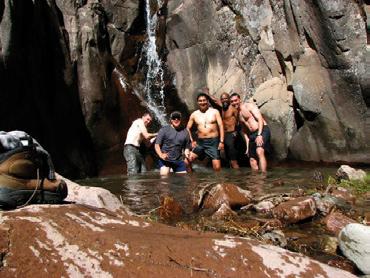

and veteran communities and families can get outside and experience the freedom of the land they defended,” wrote Stacy Bare, an Iraq Veteran and SCWE coordinator for TSC on the Military Families and Veterans Initiative blog.
The training of the 2012 SCWE class consisted of a condensed NOLS course. The seven-day excursion packed as much as possible of the typical 30-day, NOLS backpacking course into a week. Terrain association, wilderness navigation, camp cooking, bear safety, and Leave No Trace principles were all part of the in-depth curriculum.
True to their organization’s charter to provide outdoor education, the NOLS instructors taught the campers on the go and then turned leadership of each day over to the veterans, who led movement, made decisions in real time and, most importantly, planned expeditions much like the missions many led in combat. The formidable terrain presented numerous obstacles: traversing the densely-vegetated drainages, ascending the Black Range, and observing the varied terrain of a national forest, which stretches from the desert floor to an elevation of more than 10,000-feet.
Military and NOLS training reinforced each other. The accomplish-the-mission mentality of the military was very similar to NOLS’ focus on completing tasks in order to keep the group of campers on pace en route to each day’s destination. In fact, each day was like a mission in and of itself in that team leaders were charged with making decisions the consequences of which affected the whole group. For instance, decisions on water— to carry enough or camp near a source—were made by
team leaders for the team. Sometimes answers were obvious, but more often than not, the decisions were less than black and white. In such cases of gray information, the team leaders made judgment calls.
Each of the leaders rose to the challenge by fusing the NOLS training in progress and prior military training to accomplish the common goal, or mission: locate camp, establish it, and repeat the backpacking cycle. The routinized predictability of the military day was similar to the mission-oriented mentality of backpacking in a desert climate, where water is a matter of life and death rather than the improvised explosive devices of Iraq or the suicide bombers of Afghanistan.
The training was always kinesthetic; it demanded doing, not just demonstration. Following basic instructions, students took the lead as trip leaders, navigators, and cooks, among other camp roles. Similar to the military, from sun up to well after down, the students worked together on common goals. Whereas the common goals formerly involved national defense, this mission focused on the group’s movement and well-being in the unforgiving natural environment of remote wilderness.
Instead of guns, students shot azimuths; instead of Meals-Ready-toEat (MREs), campers consumed communally cooked camp food; and instead of saluting those of a higher pay grade, the veterans saluted their natural surroundings each day. Each morning all rose to experience the natural wonder of the wilderness.
Although modern camping—with all of the accoutrements of a bigbox store—is arguably as comfortable as a suburban home, lightweight backpacking is the closest many ever come to experiencing homelessness in that everything needed to survive is in the camp party’s possession. Carrying the very means of survival equates to each camper humping roughly one-quarter to one-third of his or her body weight— for more than eight hours in some cases. So it made sense that most nights, the day’s mileage left many ready for an early lights out.
But one night the allure of the open sky surpassed fatigue. That night under a cloudless, crystal-clear sky speckled with diamonds of
light and peppered with occasional shooting stars was proof positive that there’s peace to be attained by experiencing nature firsthand. Taking off of work, flying down to Tucson, Ariz., and spending a week with perfect strangers in the wilderness was all controlled chaos on the surface. But ultimately the leap into the uncertain delivered a piece of peace—albeit fleeting like the shooting stars, which raced across the dark tapestry of that wondrous night—but peace all the same. It’s that sense of naturally induced peace which cannot help but be discovered in the wilderness. This powerful peace is what presumably drove conservationists like Aldo Leopold to conserve the Gila National Forest, so that all Americans, including those who’ve served in uniform, might experience it for themselves.
Empowering veterans, especially those who experienced combat, to lead outdoor trips for friends, family, and fellow veterans, but also for their own sakes, was the trip’s modus operandi.
Each veteran walked away with a sense of how he or she was going to exercise the newly learned outdoor leadership skills. Trevor Ivory, a retired U.S. Navy helicopter pilot, even developed a “multi-tracked” plan.
“I want to work with Irvine Ranch Conservatory to qualify as a volunteer trail guide,” he wrote in a Sierra Club blog after the trip. “This will continue to build on last week’s training and allow me to gain additional outdoor experience. I am also looking at planning and executing a three- to four-day backpacking trip this summer in the Cascades of Washington state. As I build experience I will be more willing and able to support possible veteran-type trips.”
Moreover, on some semi-tangible level, the course and its legacy offers a case study in the healing power of nature. Might more nature
“Instead of guns, students shot azimuths; instead of MealsReady-to-Eat (MREs), campers consumed communally cooked camp food; and instead of saluting those of a higher pay grade, the veterans saluted their natural surroundings each day. Each morning all rose to experience the natural wonder of the wilderness.”
mean more peace for a veteran suffering from wounds to the mind and body? It certainly wouldn’t hurt to try.
Experienced outdoor leaders note that there is additional power often rediscovered in the individual who takes on an outdoors leadership challenge. This renewed sense of purpose, some say, has a perpetual healing property since it draws additional people into an increasingly deeper connection to the natural world.
And TSC’s founder would say unequivocally that nature heals all wounds.
“Nature is always lovely, invincible, glad, whatever is done and suffered by her creatures. All scars she heals, whether in rocks or water or sky or hearts,” wrote John Muir in John of the Mountains: The Unpublished Journals of John Muir.
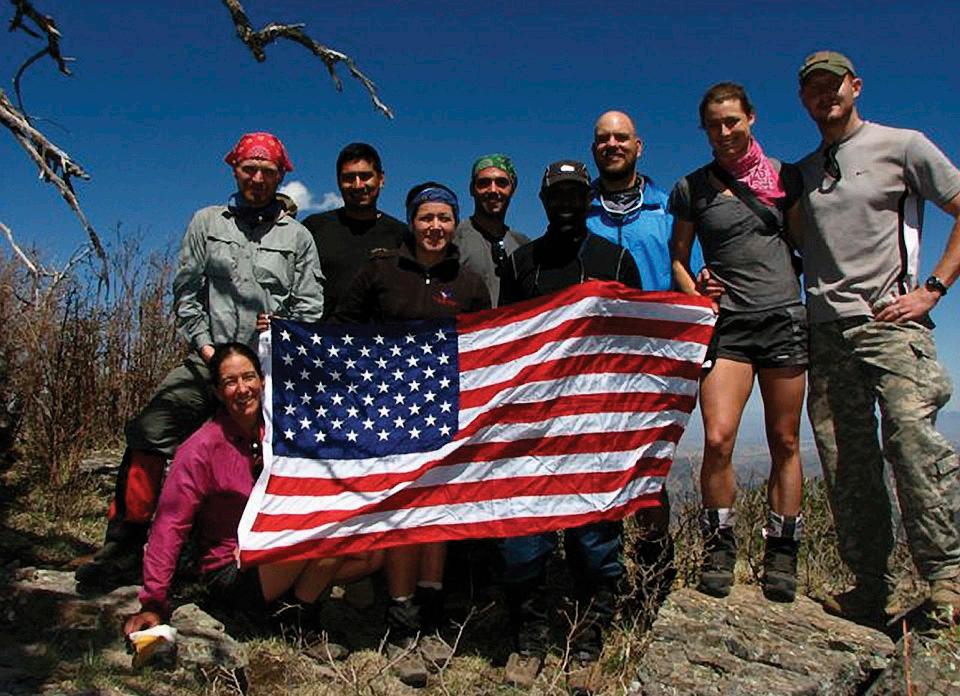

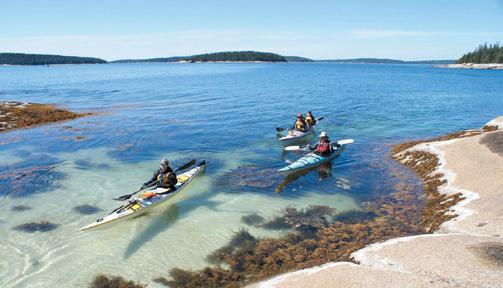
Aug. 11–20, 2012
$2,392
Saddle up! Wyoming’s Wind River Mountains were explored and surveyed largely on horseback, so here’s your chance to experience the work and rewards of traveling in this timehonored fashion.
This adventure starts at NOLS’ Three Peaks Ranch where the school’s horse courses and reration logistics are based. After an introduction to ranch life and horse handling, you’ll ride into the mountains with a train of pack animals for a few days of camping, fishing, and riding. You’ll focus on the art of Leave No Trace camping with the horses and pack stock.
NOLS is coming to your community this fall! We’re hosting alumni reunions for grads, friends, families, and guests all across the nation. Reunions include snacks, tales of adventure, a gear raffle, camaraderie, and networking. Mark your calendars for these upcoming events:
New York City, Oct. 18
Philadelphia, Oct. 20
Austin, Oct. 24
San Francisco, Nov. 1
St Louis, Nov. 8
Houston, Nov. 10
Minneapolis, Nov. 15
Annapolis, Dec. 1
For more information, see nols.edu/alumni/reunions
Aug. 12–18, 2012
$500*
This trip takes NOLS grads, friends, and families into Wyoming’s Wind River Mountains for a week of camping, connection, camaraderie, and service. We’ll team with the U.S. Forest Service and Student Conservation Association to conduct meaningful and challenging service projects that protect public lands and enhance visitor safety and enjoyment in the backcountry.
The Wind Rivers are a high, beautiful, granite range sprinkled with meadows, lakes, boulder fields, and conifers. Moose, deer, elk, and coyotes are common, and bears, mosquitoes, and even bighorn sheep linger in the Winds. The hike into our project site may include a lot of uphill trail—recent projects were at 11,000 feet. Our project may include trail construction, bridge or walkway maintenance, or campsite rehab. Service work is demanding; we’ll routinely use shovels, hammers, buckets, pry-bars, and lots of team muscle on most days of the trip.
The trip is not all work; there will be time for photography, socializing, and enjoying Wyoming’s high country. Instructors will plan on an optional non-technical peak ascent as well as fly fishing practice and instruction.
Past service trip participants speak passionately about the beauty of the area, the team spirit of the group and the satisfaction of “giving back” to the land through service. The words “fun” and “hard work” are used in equal measure. *cost is subsidized by NOLS!
Aug. 12–21, 2012
$2,395
Explore Canada’s Yukon Territory on an aweinspiring trek through the Tombstone Mountains. Hiking in the Yukon wilderness is always spectacular, but in late August the tundra lights up with fall red, yellow, and orange foliage on this once-in-a-lifetime backpacking experience in the far North.
Sept. 2–9, 2012
$1,600
This sea kayaking adventure explores some of the hundreds of islands scattered along the Deer Island Archipelago just south of Maine’s Acadia National Park.
Date: Oct. 27–Nov. 8, 2012
Price: $2,395
This hiking trip travels the Kumaon region in the high peaks of the Indian Himalayas. The staggeringly beautiful Kumaon, also known as the “Abode of the Gods,” is rich in Indian myth, culture and history. It is the birthplace of the holy Ganges River and a crossroads of ancient trade routes between India and Tibet. Burros will lighten your pack.
Nov. 14–19, 2012
$1,600
The coastline of the Bahamas is pristine, remote, and often uninhabited; the sea is rich with marine life and coral reefs. Many of the plant and animal species found here are unique and highly specialized. Sea kayaks allow us to explore both environments in this stunning part of the Carribean.


By Jordan Summers
Penned by NOLS grad (Rocky Mountain Outdoor Educator ’90, WFA ’08, WFR ’10) Jordan Summers, 60 Hikes Within 60 Miles: Sacramento provides residents and visitors to the City of Trees with enjoyable hikes through the area’s varied topography. Divided into sections by region and containing a detailed index for hikes by category, including distance, diffi culty, terrain, interesting features, and more, 60 Hikes Within 60 Miles: Sacramento is an excellent resource. Including hikes from the areas of Davis, Roseville, and Auburn, this guidebook provides detailed directions and descriptions. Coupled with a map and image for each hike, as well as pertinent “AtA-Glance” sidebars, hikers of all abilities will be able to more easily explore the Sacramento area, from the valley to the delta to the foothills, using this book as a resource.
True to his NOLS education, Summers stresses expedition behavior on trails—he advises on topics from personal responsibility concerning planning ahead and preparing to trail etiquette when hiking with children.
Summers’ book is unique because of the care taken in crafting it. Testament to the many hours Summers logged while outside researching this book are the thoughtful and useful aspects found in his book others lack: route configuration, exposure, latitude and longitude, nearby activities, and more.
Adventurers in the area will want to take 60 Hikes Within 60 Miles: Sacramento with them on their California explorations to open up a new world of hikes in the Sacramento area. Reviewed by Madeline Friend, NOLS Alumni Relations intern. © 2008, Jordan Summers
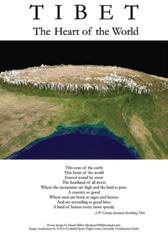

By Daniel Miller
Since his introduction to Nepalese nomadic pastoralism in 1974, Daniel Miller (Teton Climb ’72 and IC ’74) has immersed himself in this lifestyle and culture of the Himalayas and the Tibetan Plateau of China.
In his 2011 book Searching for Grass and Water, Miller tells of his adventures in these regions. The color photos make up the majority of the book and allow readers to view all aspects of life and appreciate how special of places the Tibetan Plateau and Himalaya region are.
With the issues of land privatization and grazing rights, the nomadic way of life is being threatened, and Miller hopes livestock mobility can be encouraged as a strategy to maintain it. He argues that if nomads gain control of the rangelands they call home, they could help conserve the land, avoid displacement to cities, and preserve wildlife populations.
Before Miller’s journeys and his subsequent publications, he spent time in Montana as a graduate student of range ecology. His interest and experience with sustainability efforts will catch readers’ attention and, he hopes, keep people environmentally aware.
Tibet from Space: Astronaut Photos of the Tibetan Plateau and Himalaya , is another book of Miller’s. It boasts photos of the same region from above the Earth. This book features aerial photography courtesy of NASA Johnson Space Center, as well as Miller’s own photos. The astronauts’ photos capture the dramatic lakes and mountains in varying orientations and seasons; Miller’s photos of the people and culture bring the panorama shots to life.
It is apparent Miller has had many life-changing experiences in this part of the world. He uses these books to take a stance on the importance of conserving this environment and the traditional lifestyle. Reviewed by Jordan Evans, NOLS Alumni Intern. © 2011 and 2010 respectively, Daniel J. Miller





In this media age, children are spending increasingly more time indoors, and Fuzzy Slippers Productions’ 2010 film Mother Nature’s Child illustrates how raising kids under this “protective house arrest” harms their creativity, health, and sense of community. Directed by Camilla Rockwell, this 57-minute film originally aired in vermont and New Hampshire to raise awareness of children’s fading connection to nature.
Technology is easy to blame for this change, but the real culprit is society’s fear of letting children take chances. Any NOLS grad knows the importance of risk management in the wilderness, yet in the front country there is a tendency to try to eliminate risk altogether.
Mother Nature’s Child demonstrates how this trend is unrealistic by following preschool students lucky enough to have a teacher who takes them outside. It’s evident during their recess in the woods that learning and playing happen simultaneously in this environment.
The mid-childhood section focuses on nature’s effects on creativity and refl ection. The answer is “exposure, exposure, exposure,” as young city dwellers are introduced to the joy and calm from fi shing and a man teaching his granddaughter responsibility when out deer hunting with her own rifl e.
Finally, NOLS alumni will enjoy the adolescence section and relate to the pride felt from developing self-suffi ciency during a six-month canoe and cross-country ski expedition. As the students build connections with nature, their relationships with each other grow as well.
The NOLS community will likely agree with the message that there is no substitute for playing outside at any age. Rockwell and co-producer Wendy Conquest hope to continue spreading this message to educational and medical communities across the country. Find out more or order the DvD at www.mothernaturesmovie.com. Reviewed by Jordan Evans, NOLS Alumni Intern. © 2010.
BY JORDAN EvANS, NOLS ALUMNI INTERN
ibex outdoor clothi Ng promises that their wool products are ultra-soft and comfortable, not to mention environmentally friendly and good for temperature regulation. NOLS sent some of this


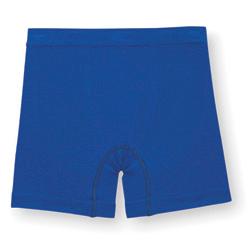
BY RYAN HUTCHINS-CABIBI, NOLS ROCKY MOUNTAIN PROGRAM SUPERvISOR
a s a ti Nkerer of gear, i get really excited when someone decides to build something they want that didn’t formerly exist. In the case of Devin Montgomery, that something was a wood-fired boiler small and light enough to take backpacking lightweight style. The story and evolution can be found at Montgomery’s blog, theboilerwerks.com.
The Backcountry Boiler is elegant in design and function. It allows a backpacker to go without fuel by burning found fuels. Weighing in at 8.8 ounces, the boiler
Vermont-based company’s newest clothing out on a course with a field instructor to put it to the test. We’ve all heard the expression “cotton kills,” so Program Supervisor and senior NOLS instructor Anna Haegel set out to see how wool underwear performs in the backcountry.
Anna added items from Ibex’s new “Balance” line of products to her pack on a two-week Wyoming backpacking course in May. The Balance fabric blends wool, nylon, and spandex for comfort and breathability when climbing, hiking, or hanging out in camp.
Anna tried out the women’s underwear bottom and top: Balance Brief ($30) and Sport Bra ($60). The garments are well made from soft wool and come in a variety of colors, which are actually a bit darker than the site’s photos. After two weeks of hiking, post-holing, and slogging through all kinds of mountain weather with a backpack, Anna said of the Ibex layers:
“Great! The under layers were comfortable, and wool just doesn’t hold the
is heavier than some alcohol stoves but in the same weight class as many other wood burners. In addition, the boiler can be used as a water bottle with the included stopper.
The boiler functions on the chimney effect. A small fire is built in the burner base using tinder. In practice, I found it easier to light the fire and then place the boiler on the base. Be sure the stopper is not plugging the water fill hole, or the vessel could explode.
The Boiler proves to be surprisingly fast. Boiling two cups of water on a NOLS Lightweight Backpacking Course consistently took five minutes or less at altitudes above 8,000 feet, often using frigid water. It’s important to note that the boiler doesn’t cook food but boils water to be added to a dehydrated meal in a bag or container designed for this.
The ability to travel without fuel is an
body odors like synthetic. The sizing seems right on.”
We also asked an instructor to field test a pair of men’s Ibex “Balance Boxers” on a weekend hike to and from his secret fishing hole in the Wind River Mountains. The Balance Boxers are also a soft mix of wool, nylon, and spandex with sizing that seems to run small; our subject’s usual base layers are all sized medium, but the large sized test Ibex boxers fit just fine.
Throughout a day of hiking, wading, casting, and strutting through the deadfall, the test boxers held their shape, didn’t ride up or down, and dried quickly. Our male test subject had this to say:
“The Ibex boxers are consistently comfortable on active, backcountry days, and probably the nicest skivvies I’ve ever worn!”
If you’re in the market for comfortable, seamless, wool under layers, consider Ibex. Priced similarly to other performance outdoor layers, Ibex clothing is available at http://shop.ibex.com/ and many fine outdoor retail stores.
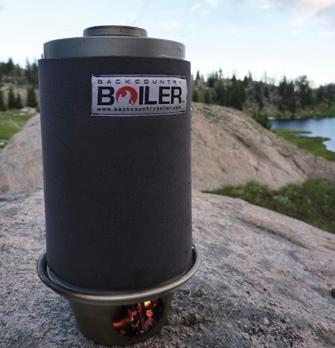
unquestionable advantage. The Backcountry Boiler is an efficient, eco-friendly (burns renewable fuels) stove system that evolves the lightweight kit to the next level.


AIRCONTACT 75+10
Your Ultimate Companion featuring:
• Pivoting hip belt that moves with you
• Rain cover that keeps your gear dry
To learn how you can explore places like Norway with an Aircontact pack, visit www.deuterusa.com/aircontact



• Heavyweight hauling Aircontact Suspension



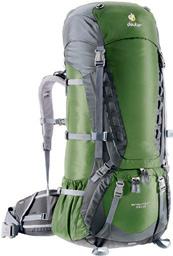


Wilderness emt, leadership training, rescue skills, and expedition experience in One complete Package
This demanding semester will challenge you in both traditional and wilderness classrooms and will provide you with the theoretical and practical foundations for a career in outdoor recreation, medicine, and rescue.
Date: February 2–May 2, 2013
Location: Lander, Wyoming
For More Information: Please visit www.nols.edu/wmr








SUBMITTED BY SAM BAKER, NOLS GRAPHIC DESIGNER

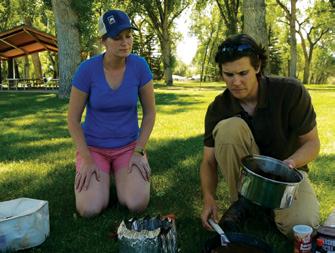
a fter a loNg day iN the backcouNtry, particularly WheN you ’ re out there for, say, a honeymoon, a moment to relish a delectable dessert is the perfect break. When that dessert is a new world of brownie and cake, it’s also the perfect brake (Get it? Brownie + Cake …)!
cake ingRedienTs
2 c. sugar
½ c. cocoa powder
1 tsp. vanilla
2 c. flour
¼ c. cocoa mix
½ tsp. salt
½ tsp. baking powder (optional)
½ c. chocolate chips
¾ c. water
1 c. softened butter
2 eggs (powdered works, too)
cHocolaTe FRosTing ingRedienTs
½ c. cocoa mix
½ c. sugar
4 tbs. butter
2 tbs. water
1 tsp. vanilla
Mix all the dry ingredients, preferably before heading into the backcountry. Mix butter, eggs (real or powdered), and water together. Slowly add the dry mix to the wet ingredients. Add the vanilla. Lightly flour your fry-bake, and then pour in the mixed contents. Do not oil the pan.
Get your WhisperLite stove warmed up, then depressurize it by turning it off and slowly turning the top of the fuel bottle until you hear the pressure release. Reattach it fully and turn the stove back on without pumping the fuel. Turn the stove on low and place the fry-bake on a “tower of power.” Place a cake hat around your fry-bake and lid or start a twiggy fire on top of the lid. Bake for approximately 15 minutes or until the cake doesn’t jiggle and leaves a fork clean.
If you have two stoves, start the icing when the cake has 5-10 minutes left to bake. Mix all of the ingredients except the vanilla. Stirring over low heat for 5-10 minutes until small bubbles appear. Add vanilla and cook for another couple of minutes. Pour it over the cake and smooth over top of cake.

waTcH: Watch: We tried both real and powdered egg recipes. Scan this QR code to watch us in the backcountry bakery or search “NOLS Cooking Show” at NOLS.Tv.
The 2013 course catalog will include three innovative new courses. Each of these new courses will address a specifi c educational interest or, more accurately, set of interests.
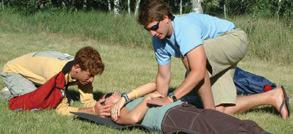
For those students whose interests lie in a career in search and rescue or similar fields, the new wildeRness medicine and Rescue semesTeR based in NOLS Rocky Mountain will suit their needs perfectly. The semester begins with a demanding, four-week Wilderness Emergency Medical Technician course, followed by nine weeks of canyon backpacking, canoeing, and rock climbing. Additionally, the curriculum includes swiftwater and rock rescue certifications.
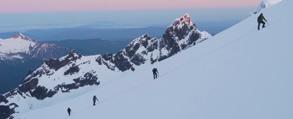
For those seeking a course that spans locations, NOLS Pacifi c Northwest will premiere the mounTaineeRing and sailing course next summer. This course will take students on explorations of a wide range of terrain, from the rugged world of mountaineering to the rolling sea environment off the coast of Washington.
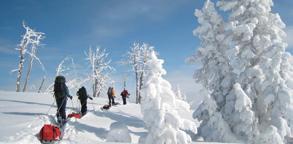
Finally, for students who wish to explore backcountry snow but just can’t stand the idea of shredding pow on two boards, NOLS Teton valley will soon be enrolling the 23 and oldeR snowBoaRding course. Students will master winter camping and delight in the discovery of hidden slopes on splitboards. Find more about these courses online at www.nols.edu.
Contact the Alumni Office via telephone (800-332-4280) or email (alumni@nols.edu) to find contact information for any of your course mates.
gR ads FRom THe ‘70s
Paul Werbin
Adventure Course ‘72
It has been almost 40 years since Paul’s first NOLS course and he is still using the skills he learned back then. In addition to a renewed interest in backpacking, Paul finds himself teaching and practicing self-sufficiency in different settings: he is now planning another spring Appalachian Trail Hike!
John Grunsfeld
Wind River Backpacking ‘74 & two NOLS Pro Courses
In January, NASA named physicist and former astronaut John Grunsfeld as the new Associate Administrator for the Science Mission Directorate at the agency’s headquarters in Washington.
Linda (Johanns) Goldeski
Wind River Biology ‘74
Linda spent time hiking in Glacier Park, Montana last year.
She lived with her family in Alaska’s bush country for three years, where she was a school principal. Linda now lives in vermont and works again as a school principal. She belongs to the Green Mountain Club and will hike the Long Trail this year.
Joe Baughman
Pacific Northwest
Mountaineering ‘77
Joe is enjoying life in the sunbelt of southern Utah. Married for 16 years, he explores the southwest desert via foot and by boat on Lake Powell. His work is providing asset management software and consulting services. Additionally, he’s recently patented a high tech new camp kitchen call the Grub Hub (grubhubusa.com).
gR ads FRom THe ‘80s
Bruce Gardner
Denali ‘83
Thanks to the re-ordering of priorities precipitated by the NOLS experience, Bruce has spent his working life learning about, practicing, and teaching the craft of timber framing. Bruce and his wife Cyndy own Homestead Timber Frames in Tennessee. They raised three beautiful children and are now proud grandparents to Bremen and Gavin.
Rick Craig
Former NOLS instructor
Rick recently authored the book “The Last Mountains,” a thriller set in the Teton backcountry. Rick and his wife live in Missoula, Mont. with their daughter Wren.
gR ads FRom THe ‘00’s
Julian Gordon
Yukon Backpacking ‘03
Julian recently completed his
The creative side of Fundraising: NOLS is very excited to announce our first ever solicitation video! Last spring, NOLS’ video team struck up conversations with young donors asking, “Why do you donate to NOLS?” Participants ranged from high school seniors to young professionals, from scholarship recipients to founders of green-energy start-ups. They all cited the formative nature of their NOLS experience and the importance of giving back to the school. v iew the video at http://bit.ly/futureNOLS and spread the word by sharing it on Facebook and Twitter.
keeping it l ocal: This year, NOLS Development teamed up with three branches to raise money for local scholarships. In May, NOLS Pacific Northwest participated in the Seattle Foundation’s GiveBIG day of giving, while June and July saw events supporting NOLS Rocky Mountain and NOLS Teton valley through the Lander Community Foundation’s Challenge for Charities and the Teton valley Foundation’s Tin Cup Challenge. Each foundation matched donations up to 50 percent with the events that inspired area residents to donate to their favorite local non-profits, building stronger communities. Together, we were able to raise enough money for a scholarship at each branch, meaning we will create more positive, ethical leaders in our communities.
Family m atters: As one of our core values, community means a lot to NOLS, so it’s great when our community pulls together in support of the school. This happened recently when NOLS field, WMI and in-town staff donors blew the goal of 40 percent staff participation out of the water three months before the end of the fiscal year. By giving back to the organization that they (sometimes literally) give their blood, sweat, and tears to, our staff shows their steadfast belief in the NOLS mission. A big thanks from NOLS Development to all our staff for everything they do for the school. NOLS is a family, and families take care of each other.
l earn more at www.nols.edu/giving
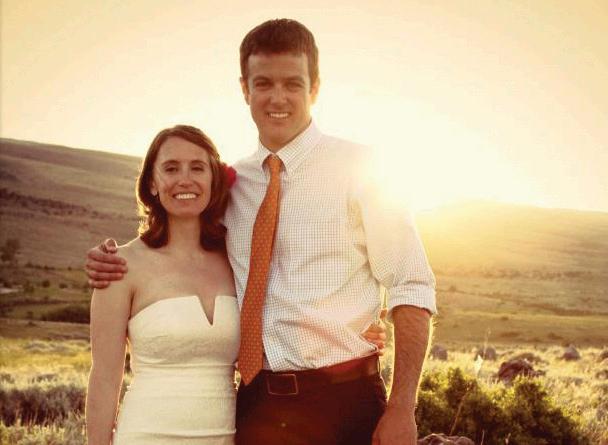
58th Marathon in Geneva, Switzerland!
Ann Aubon Gibson
Rocky Mountain Outdoor Educator ‘04
Ann moved to Boulder, Colo. and founded Adventure Wellness (adventure-wellness.com), which supports adventurous people who want to sustain or recover their energy. Ann made a solo, two-month spiritual sojourn through Patagonia last year. Photos are on her Facebook page.
Eric Eichler
Wilderness First Responder ‘05
Eric is getting his master’s in social work and working with combat veterans at a vA hospital. He continues to brainstorm ways to get the veterans outside. Eric is excited to recertify his WFR with WMI in a few months!
Holly Allen
Alaska Backpacking and Sea Kayaking ‘07
Holly, the daughter of former NOLS instructors Jim and Mary Stone Allen, represented Wyoming in the Miss USA pageant in Las vegas June 3.
Charles Dunevant
Spring Semester in the Rockies ‘07
Charles graduated from Western Carolina University in 2010 and works in North Carolina as a natural resource conservationist. He married his college sweetheart, Summer Tindal, on June 2, 2011. Charles enjoys rural life and the solitude of backcountry camping/ fishing/hunting. “I couldn’t have accomplished most of these tasks without the character that NOLS forged. Thank you.”
Dan King
Fall Semester in India ‘07
Dan King recently put his WMI training to use when a worker collapsed where Dan was working in Pittsburgh. Dan and a co-worker went to his aid and performed CPR on the patient and kept him alive until paramedics arrived.
Dan feels his NOLS training was instrumental and that he wouldn’t have had the wherewithal to act decisively without NOLS.
Susannah Johnson
Wind River Mountaineering ‘08
Susannah is a member of the USA Gymnastics team and participated in the Olympic Trials. She didn’t qualify, but she has a remarkable tumbling resume.
Jason Boone
Semester on the Borders ‘08
Jason is living and working in Nairobi, Kenya with two other
NOLS alumni, Stephen Powell and Andrew Conway. They work for BlueSky Kenya, which does team building, adventure trips, summer camp, youth programs and is creating East Africa’s first indoor climbing gym. If you are interested in supporting his efforts, contact Jason at jason.boone@blueskykenya.org
Joshua Kloepping
Southwest Outdoor Educator
Backpacking ‘08
Josh has been guiding for Arizona Outback Adventures for the last four years and recently joined their sales staff. Josh has been upgrading their LNT awareness and procedures as well. Last year he won Guide of the Year from REI Adventures.
Zach Halverson Semester in the Amazon ‘11
In February, Zach was named the 10th best skier in the world under the age of 19 by Powder Magazine
Rick Morgan
Wilderness First Responder ‘09
Rick is the author of a new book, The Youth Sports Leadership Development Manual His book is now available at Amazon’s Kindle Store. For less than the price of your favorite Starbucks drink, you can download it in under a minute today.
Ben Rothschild
Yukon Backpacking ‘11
On March 31, 16-year-old Ben Rothschild became the youngest person ever to complete the Umstead 100 Miler. He completed the 50-mile option 23rd out of 92 runners with a time of 10:28:01. Ben said the rain during the race reminded him of hiking through the Yukon with his course last summer.
Ames Brown
Hiimalaya Mountaineering ‘12
Ames was a recent participant on the seventh season of the television show The Bachelorette . Ames holds an undergraduate degree from Yale and a master’s degree from Columbia, and he’s currently pursuing his Doctor of Business Administration at Harvard.
maRRiages, engagemenTs, and a nniveR sa R ies
Diwata Fonte, Southwest Semester ‘06 & Buck Stolberg , Pacific Northwest Wilderness ‘99
Diwata and Buck are celebrating their fifth wedding anniversary this year in NYC where Diwata enjoys sporting her NOLS wind pants in Central Park and Buck pines over all the wilderness trips he will take after graduating from med school.
Eric Conklin
Wind River Mountaineering ‘07
Eric and his fiancé are getting married in October. To set the tone of a life-long commitment to each other and the wilderness, they are planning to hike the Appalachian Trail after the wedding.
Sam Newbury and Katie Nicoll, NOLS Instructors
Sam and Katie were married April 7 at the old ski area outside of Bozeman, Mont. It was a beautiful, festive ceremony on snow at the base of the ski area.
NOLS instructors Louisa
Hunker and Nick Storm were married on June 16, at the home of former instructors George and Paula Hunker of Lander.
new a ddi T ions
Richard Williams , Patagonia Semester ‘03, Denali ‘96 & Leslie Williams
Richard and Leslie are the proud parents of a baby girl, Graeme
Reid Williams, born on April 20. Graeme weighed 7 pounds, 12 ounces at birth.
Brooke Berens
Spring Semester in the Rockies ‘99
Ruby Baxter Berens-Taylor was born on March 23 to moms Brooke Berens and Gailyn Taylor and to big brother Zander.
in RememBR ance
James Alexander Semester in Baja ‘09
James died in a diving accident in the U.S. v irgin Islands on April 20. James was born in Kansas City in 1987 and graduated from Arendell Parrott Academy in Kinston in 2006 and then UNC Chapel Hill with a psychology degree in 2010.
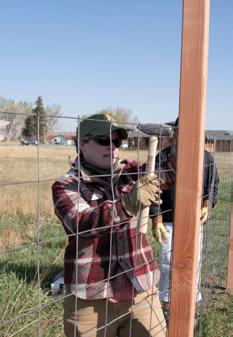
Abraham ‘Avi’ Kurganoff Pacific Northwest Mountaineering ‘10
Abraham “Avi” Kurganoff passed away on March 12. Avi was involved in University of vermont Kayak and Outing Clubs. He had started his own wilderness therapy program with underprivileged youths. Avi was known for his wide smile, affability, and especially his love for the wilderness.
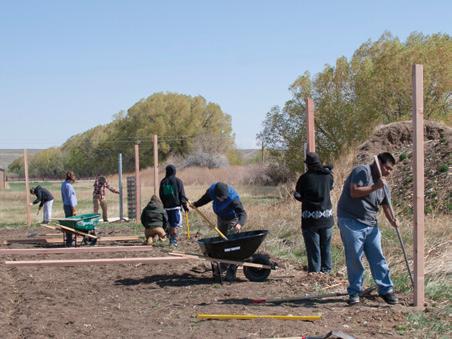
On April 27, outside the Shoshone Boys and Girls Club in Fort Washakie, Wyo., a 2,000 square foot expanse of dirt was transformed into the foundation of a community garden. Battling through 40–mile-per-hour winds, volunteers from NOLS worked alongside students from the Fort Washakie Charter High School, the Pathfinder High School, and BOCES Green Construction to build over 600 feet of perimeter fencing and 300 feet of raised beds. It was truly an incredible effort.
The garden is the brainchild of Fred Groenke, locally known as “Farmer Fred.” Groenke is the director of the Wind River Native Science Field Center and health and physical education teacher at the Charter High School. He strongly believes that community gardens can help improve the health and wellbeing of local residents. Not only do gardens provide nutritious foods, but they also inspire people to place a higher value on healthy lifestyles and environmentally sustainable practices. Groenke’s vision and energy has been instrumental in this project and will continue to be so as it moves forward.
The event attracted a strong outpouring of support from NOLS in-town staff and local businesses, who volunteered and provided food, supplies, and transportation. At the end of the day, students, teachers, and NOLS volunteers were all amazed and proud of the work they accomplished on the blossoming community garden. While much progress was made on constructing the community garden during the event, the true successes were in bringing together neighboring communities and in raising awareness for healthier lifestyles.
gR een You R ga R den:
Did you know yard trimmings and food waste make up 27 percent of the U.S. municipal solid waste stream? Starting backyard composting diverts this waste from landfills (where their decomposition is responsible for the production of greenhouse gases) and creates a valuable source of nutrients for your garden.
Remember the moment you first set foot in a NOLS building, wherever in the world it was? All novel and unfamiliar in the first days, it was comfortable and familiar by the time you were de-issuing and celebrating your course. Well, it’s business as usual at NOLS locations around the world; stay up to date on the activities here or on the NOLS Blog at nols.edu/blog.
• NOLS Southwest hosted the first ever NOLS Sierra Club Wilderness Expedition in conjunction with NOLS Professional Training (see cover article). This seven-day course trains military personnel and veterans to lead others in the outdoors.
• In February, NOLS Southwest installed a new composting system, and through the spring season, staff and students helped save over 100 pounds of organic waste from to the local Tucson landfill.
• In late 2010, NOLS Pacific Northwest purchased a second keelboat—a 36 -foot Jeanneau. “Sol Quest” complements our previous boat “Luna Quest” to complete our fleet. For the past year and a half, both boats have been in faithful (and busy!) service. Between early April and the first week of December, our two boats either have instructors training or students learning onboard almost every night.
• We’re looking toward another busy summer. We’ve broadened our reach into several new course types and populations. Last summer we ran our first Adventure Courses for 14 and 15 year olds. Due to popularity, we’ve expanded our offerings to three this summer, and four for 2013.
• We hosted seven International Space Station astronauts sea kayaking last fall.
• In the Pacific Northwest we’re uniquely positioned with close proximity between the glaciers of the high alpine and the saltwater of sea level and the Pacific Ocean. Taking advantage of these two unique environments, we’re excited to create a new course type for 2013. Modeled after many famous Shipton-Tilman expeditions of the early 20th century, the Sail and Mountaineering course will traverse the heavily glaciated Waddington Range in British Columbia, hike down to tidewater, and then sail south back towards NOLS Pacific Northwest. A small team, a remote classroom, and an extended length (38 days) are sure to make an outstanding expedition. Join us in July 2013!
nols
• NOLS has been operating in Alaska for 41 years!
• NOLS Alaska has 35 in-town staff this summer.
• There are 72 sea kayaks in our fleet
• NOLS Alaska has five school buses
• One hundred five Naval Academy students enrolled on Navy courses at NOLS Alaska this summer
• Don and Donna Ford served the school at NOLS Alaska for 23 years and retired in June.
• NOLS just purchased a 40 -acres plot of land for a new facility near the town of Nelson
• Our new property runs along one full kilometer of a scenic river.
• NOLS has the largest land use permit of any operator in New Zealand.
• NOLS New Zealand runs six sections: backpacking, mountaineering, canoeing, sea kayaking, sailing, and cultural.
nols
• Our solar electric system is five kilowatts. In our off-season, we get credit for our power, which helps offset the power we use during our operating season.
• Seven out of seven in-town staff are returning staff that have worked for Australia in-town at some time in the past.
• Our facility in Broome is 1,600 square meters.
• We have been running our semester Aboriginal cultural section with the Davey family at One Arm Point for 17 years now.
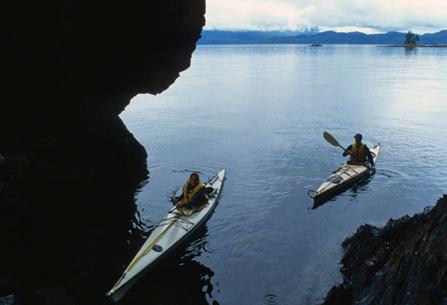


On Jan. 13, 2011, the Elkhorn Ridge Wilderness in California became part of the National Wilderness Preservation System (NWPS). Although this area was designated in 2006, it did not officially become part of the NWPS until five years after the law’s passage when restoration had occurred on 1,565 acres of acquired private inholdings. The Elkhorn Ridge Wilderness now has a total of 11,271 acres.
The Elkhorn Ridge Wilderness contains rugged Coast Range ridges covered with thick forests of redwood, Douglas fir, and tan oak. Notable wildlife species include the threatened northern spotted owl, the endangered bald eagle, and the peregrine falcon. Fish species such as Chinook and Coho salmon and steelhead utilize the South Fork Eel River and its tributaries as rearing and spawning grounds.
Leave No Trace Master Educator Course
qualifying graduates to teach LNT courses.
AUG U st 9 – 13, 2012
Sea Kayaking, San Juan Islands, Washington
AUG U st 20 – 24, 2012
Backpacking, Flat Tops Wilderness, Colorado
OC tO ber 1–5, 2012
Backpacking, Shenandoah National Park, Virgina
NOVember 2–6, 2012
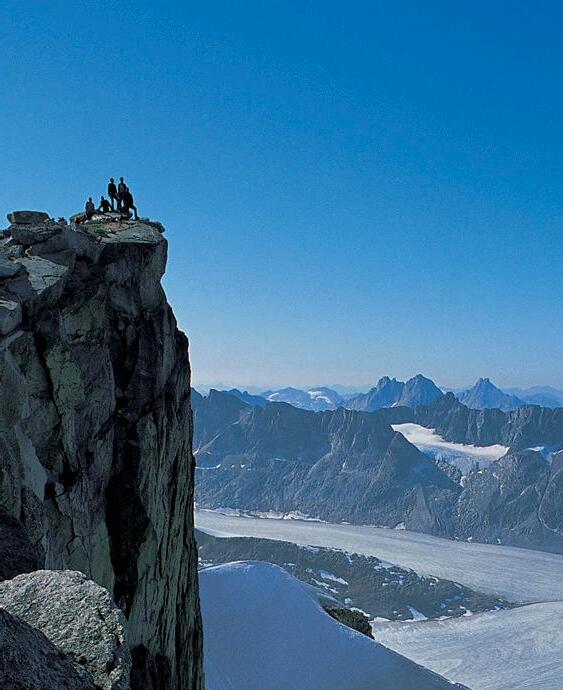

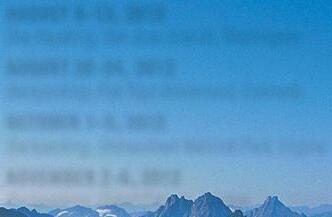
Backpacking, Grand Canyon, Arizona

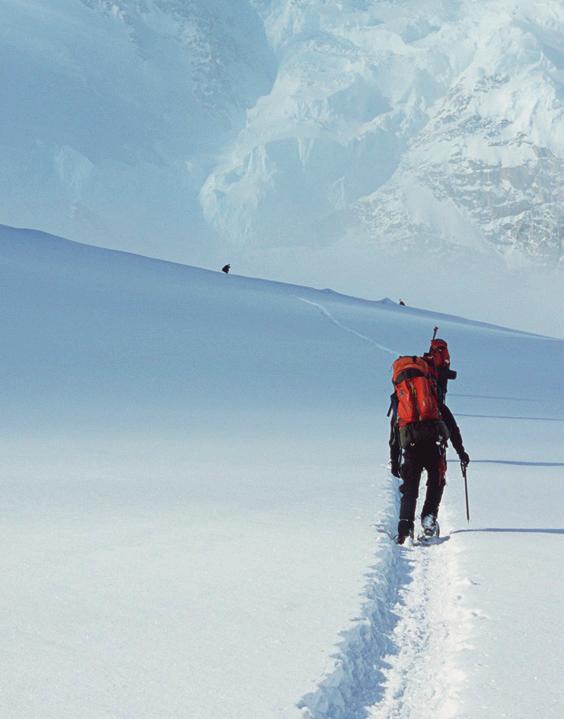

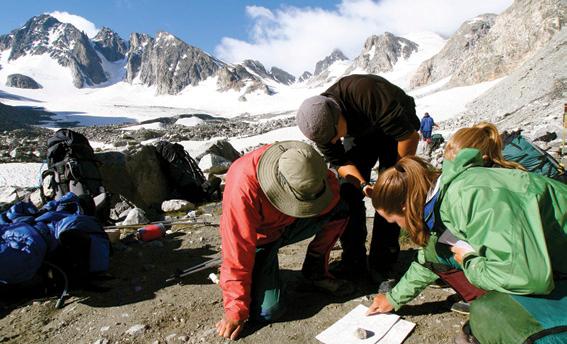
OR Oct 30–31, 2012 Madison, WI

BY JOHN HOENER, WINTER SKI COURSE ’01, GANNET PEAK ’03, CANYONLANDS BACKPACKING ‘04
I have enjoyed being a student in three NOLS courses. Initially, I took attended NOLS to learn hard skills associated with backcountry skiing, mountaineering, and canyoneering. But the real success has been starting a journey of discovering an inner peace via wilderness and solitude I did not know existed. I have seen this range from becoming attuned to one’s surroundings to becoming more self-aware.
For example, this past Thanksgiving, I enjoyed inner peace via solitude on a trip to explore Comb Ridge in southern Utah with a close friend. At our leisurely pace, we could have spent several more weeks exploring the beautiful rock art and Anasazi ruins. Places like this create a fantasyland for looking back at an ancient culture. My mind drifts while hiking in such locations, wondering what it would have
been like to live self-contained in a canyon and the surrounding mesas.
A metaphorical journey into a canyon of solitude and beauty might have you thinking these types of thoughts as you hike:
First, one of the beautiful ironies of Red Rock Country is that so little is visible in looking across a canyon rim; you spot interesting stuff, but is it special? Maybe that’s not too different from our hurried lives. It’s when you take the time to slow down or, in the case of the canyon, become submissive to Mother Nature that rewards emerge.
Second, as you descend into the canyon, you will

likely be reconnecting with your inner self in a healthy way. The all-too-frequent aspects of our modern lives, such as mindlessly scrolling through a phone for an email, will give way to the primitive life that has been part of our collective DNA since the beginning. The
How does a young woman from Los Angeles hear the mountain’s soothing quiet when she is done talking aggressively? Beyond anger, how does another young woman hear the mountain whisper, “You can make it to the top of this summit”?
rewards arise as you start to notice details you didn’t initially observe. The details might prompt questions, such as, “How did water cut this rock?” or, “How did an ancient civilization live here?” Because this is more than a hike in a pretty landscape, these questions will lead to other questions as you observe a high water mark from a recent flash flood or notice pottery shards. You are developing observational skills that will serve you well in all aspects of life.
Finally, you are on the slippery slope of the canyon as more and more details reveal themselves. Like a member of an ancient clan, primitive needs for water and shelter emerge.
As your mind’s acuity increases, your senses will make you aware of a silence that offsets modern noise. I came across the value of silence in a recent river trip. A group of like-minded friends floated Muddy Creek in the San Rafael Swell with towering mesas hundreds of feet above and several slot sections. A dozen of us drifted mostly in
quiet enjoying the canyon. It was a day of solitude and natural beauty broken only with a bit of social interaction when we regrouped.
Lyrics from the Grateful Dead song “Black Muddy River” summarize our day of solitude and friendship. Think of this as a quiet campfire song to complete the image:
“When the last bolt of sunshine hits the mountain, And the stars start to splatter in the sky, When the moon hits the southwest horizon, With the scream of an eagle on the fly, I will walk alone by the black muddy river …”
As wonderful as finding a personal inner peace via solitude is, being part of the awakening of a group of at-risk teens is particularly special. Recently, I completed a three-and-a-half-week backpacking trip in the Lost Creek Wilderness as a guide for an alternative high school in Colorado. Though we traveled through scenic stretches of granite pinnacles enjoying signs of abundant wildlife, more than anything, Lost Creek Wilderness was about solitude.
Our students, while committed to changing their lives in positive ways, needed the peace of the mountains to come to grips with their needs and determine how to meet them. At times, we were prone to extended periods of anger-management drama. How does a young man from New York listen to an inner voice as he sits alone to calm down? How does a young woman from Los Angeles hear the mountain’s soothing quiet when she is done talking aggressively? Beyond anger, how does another young woman hear the mountain whisper, “You can make it to the top of this summit” as she searches for the confidence that has eluded her for years? And what wisdom did the mountain communicate to the young man that allowed him to focus positively so much more at the end of the trip? Perhaps it was an application of what outdoor educator Almut Beringer calls “being in nature,” a phrase describing nature’s wonderful healing value.
Based on each of these experiences for myself and others, I have adopted the simple equation from the geographer Yi-Fu Taun: unoccupied space or wilderness equals freedom and solitude. Both freedom and solitude have the capability to endlessly adjust to personal interests that might include a slot canyoneering adventure or just a casual hike.
“I am 22 years old, just graduated from college, and give what I can. To my fellow NOLS graduates: remember those leadership principles your instructor once wrote on the sleeping pad whiteboard? ‘Model the way’ and give what you can to Campaign NOLS.”

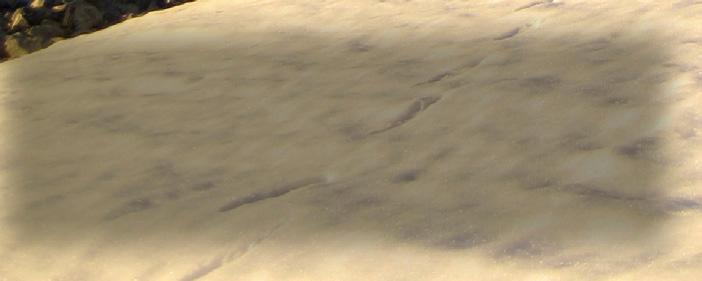
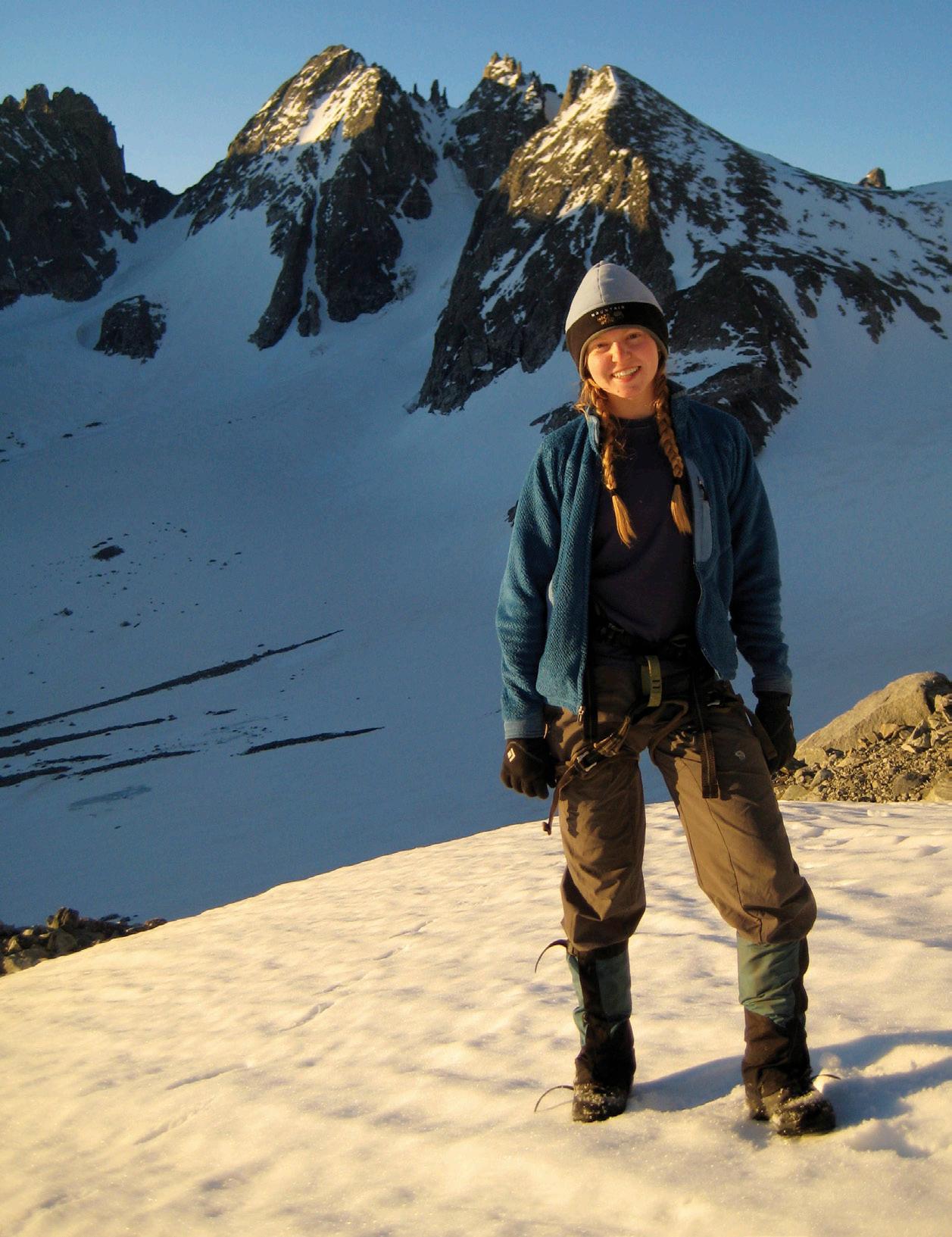
National Outdoor Leadership School
284 Lincoln Street
Lander, WY 82520-2848
nols.edu • (800) 710-NOLS
THE LEADER IN WILDERNESS EDUCATION
Traverses
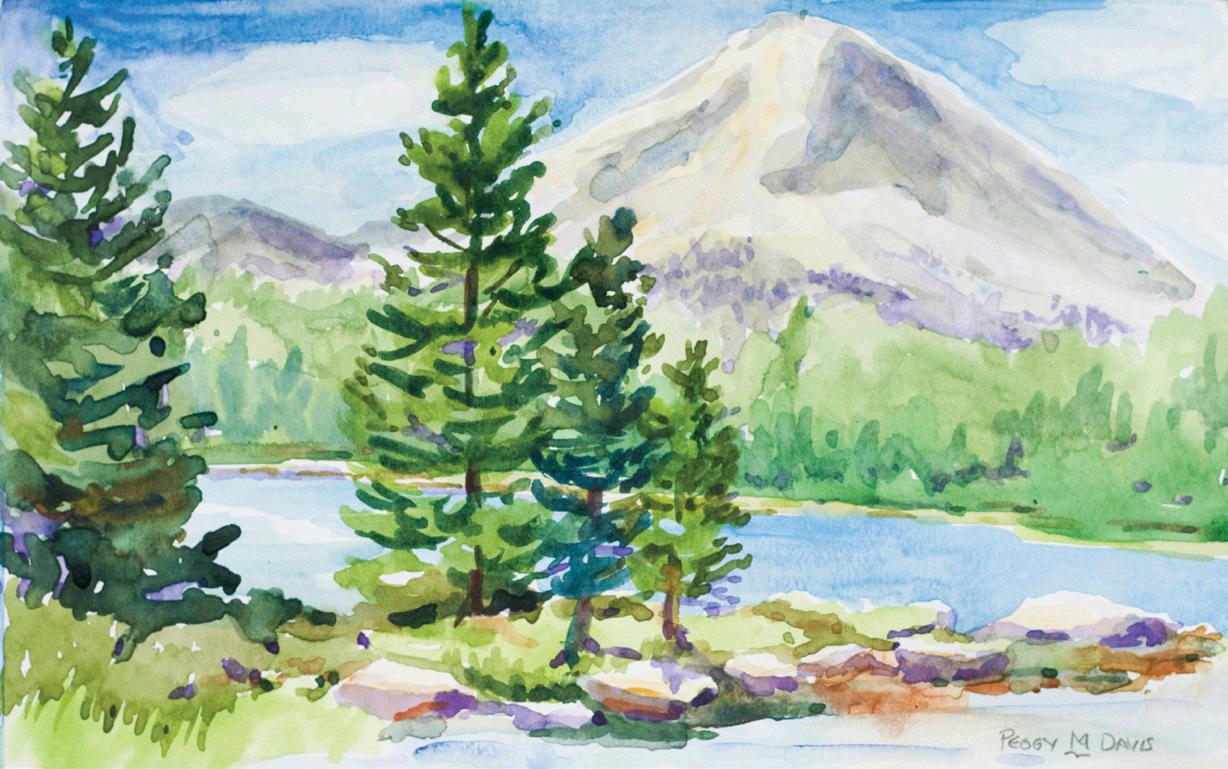

Inspiration strikes in the Wind River Mountains. Peggy Davis paints the scene before her during an Alumni Fly Fishing course, which she took with fellow NOLS graduates including her husband. The two took a fly fishing course together several years prior. Photo by Brad Christensen
we’d love to hear from you!
Send letters, cartoons, rants, limericks, or watercolors our way, and we’ll get them on the pages of The Leader. We’re easy to contact—try Facebook, Twitter @NOLSedu, email (theleader@ nols.edu) or the phone at (800) 710-NOLS.